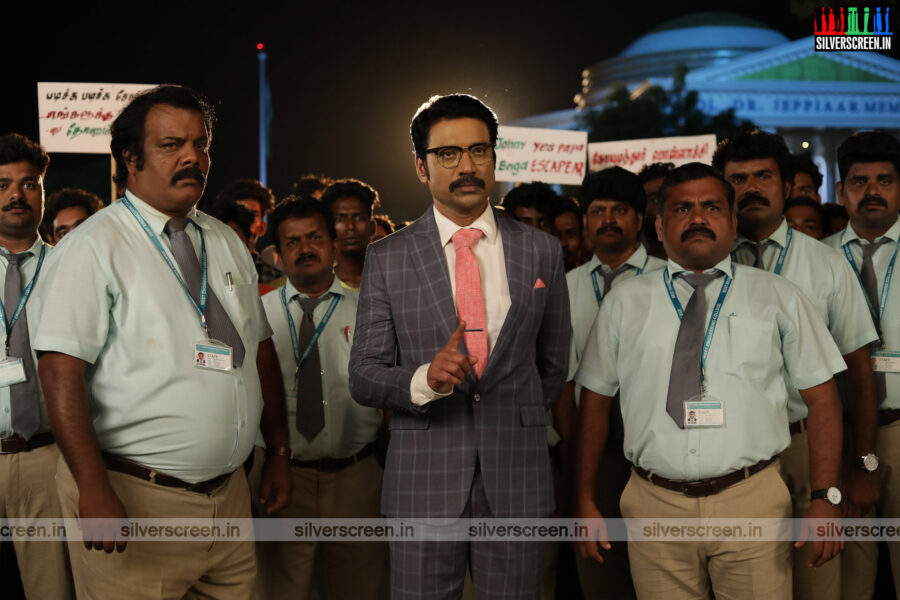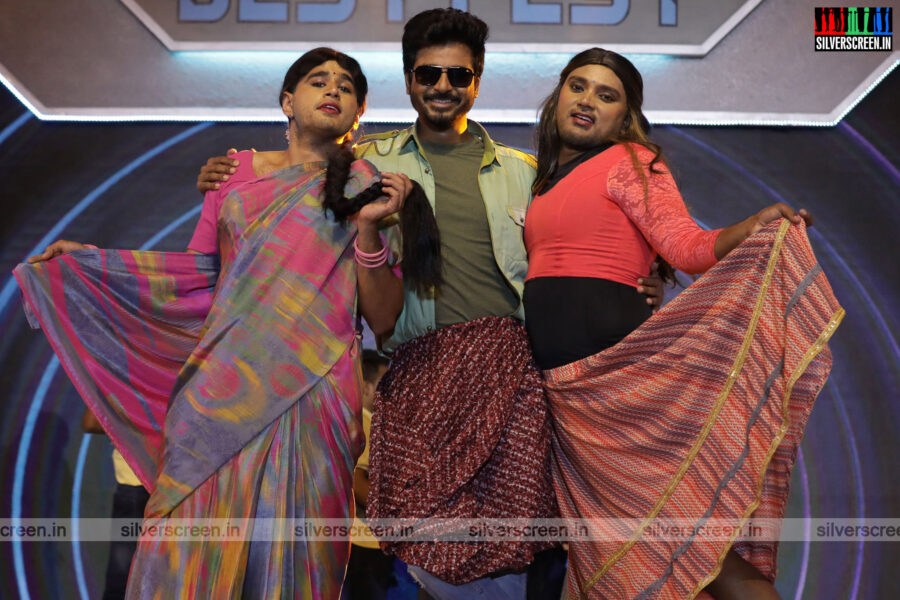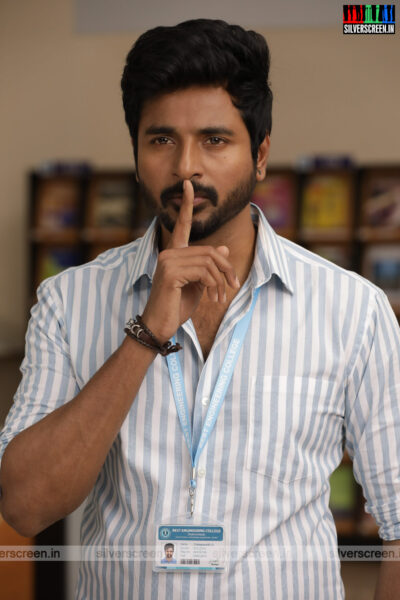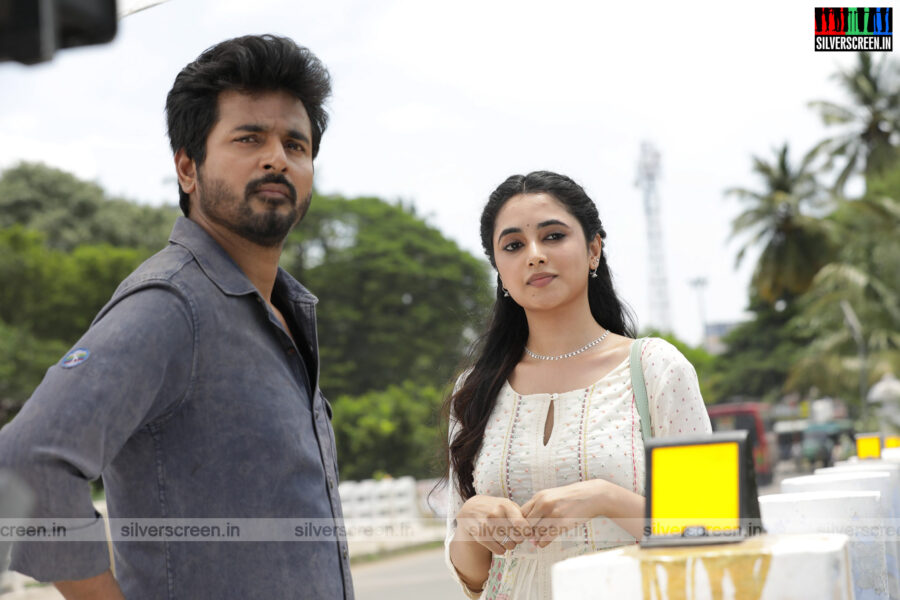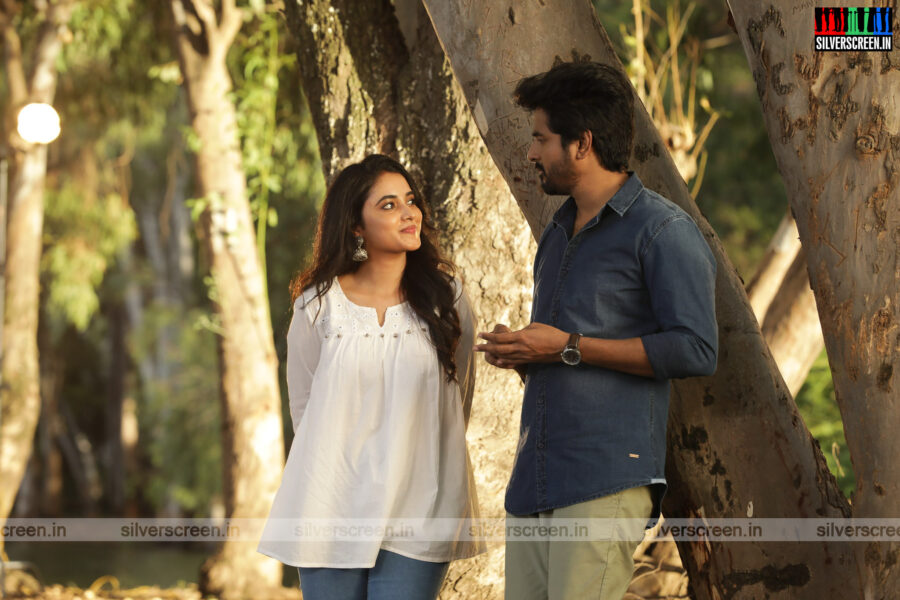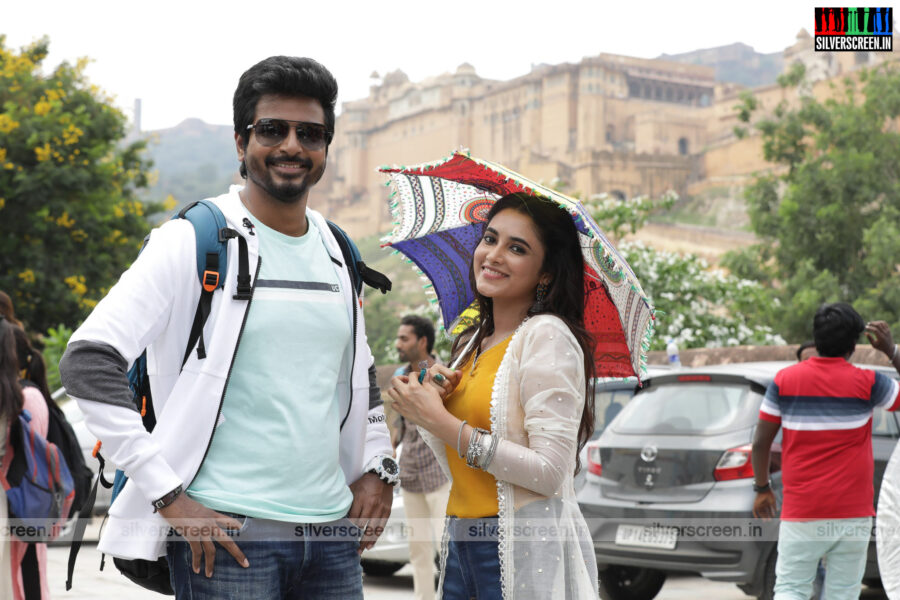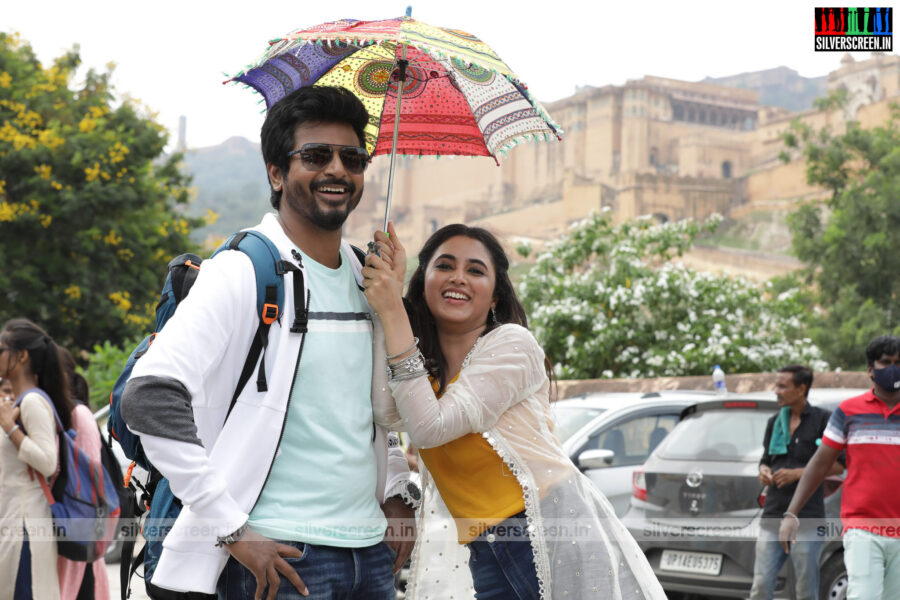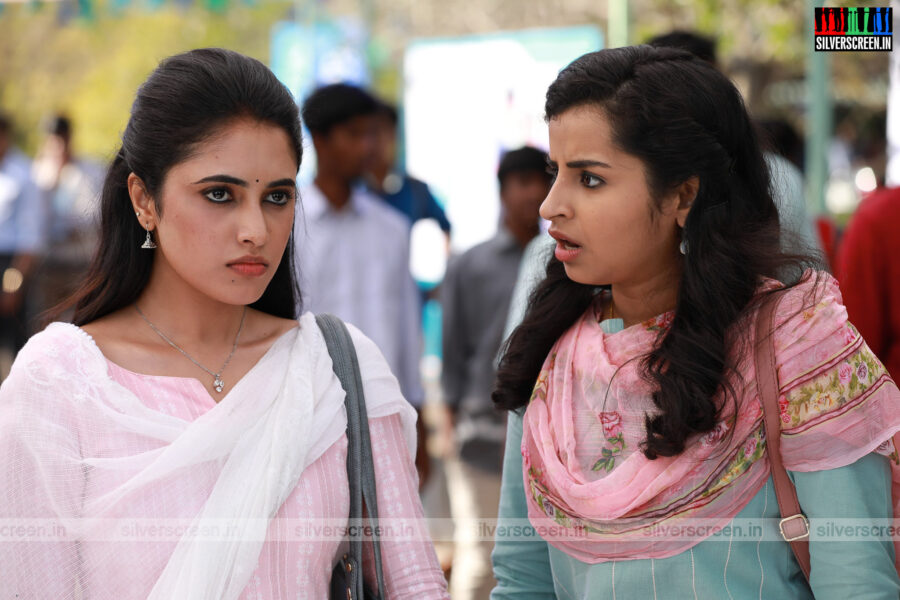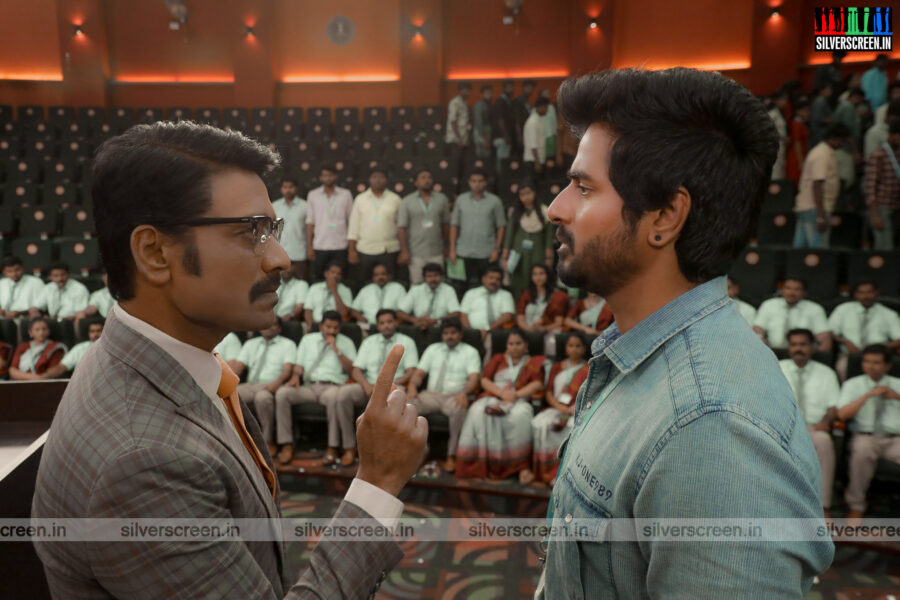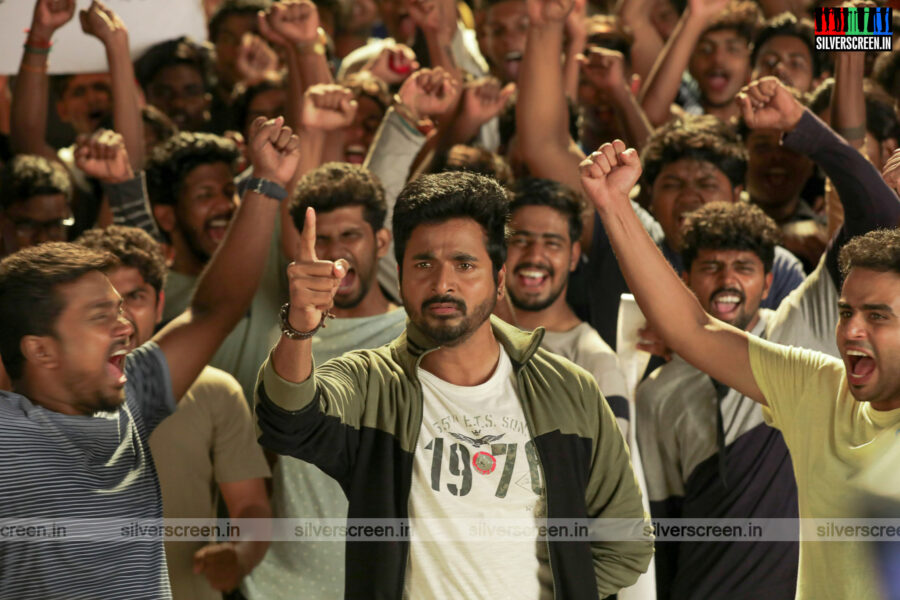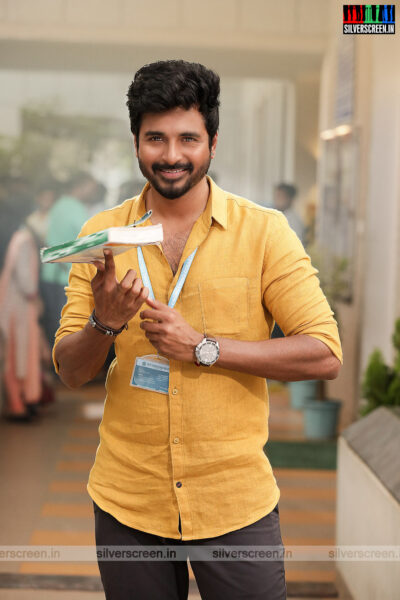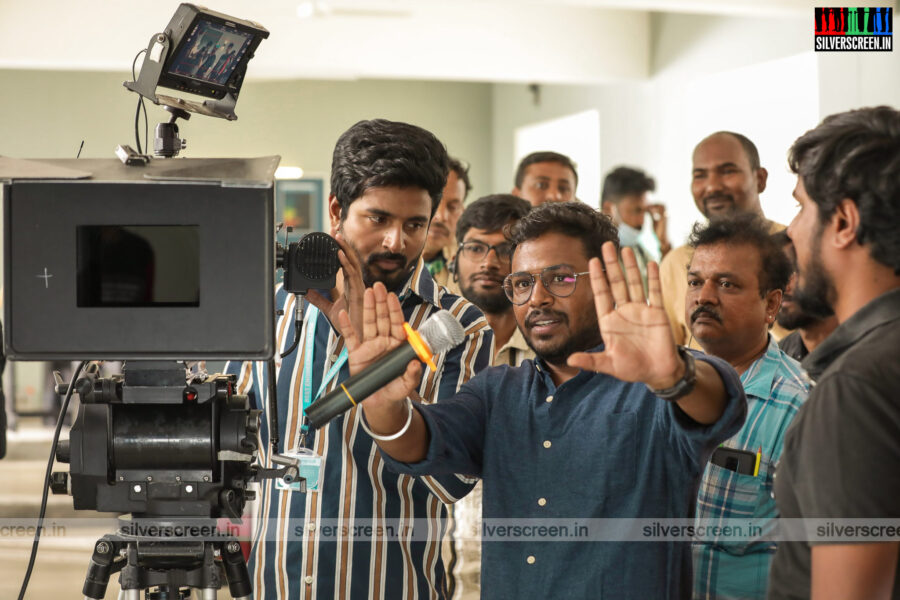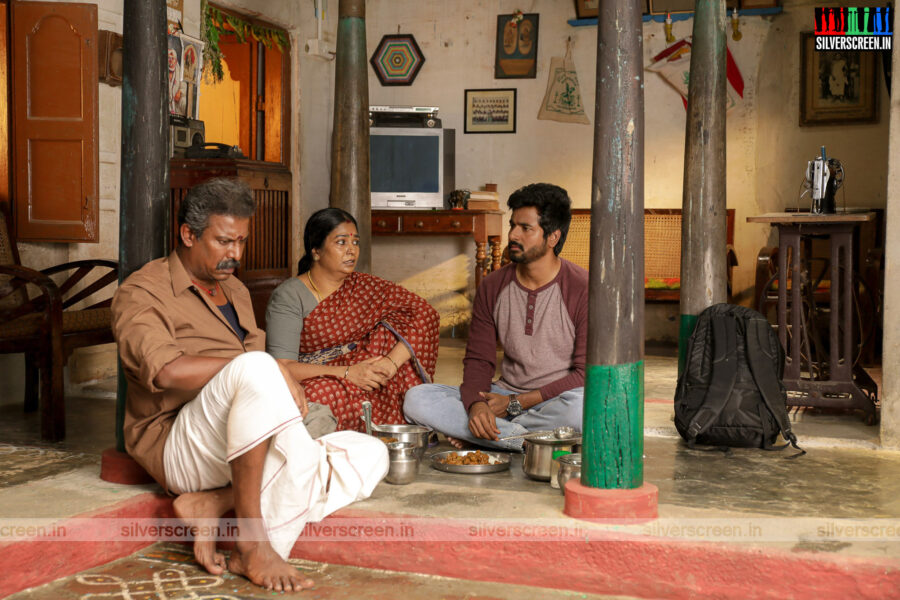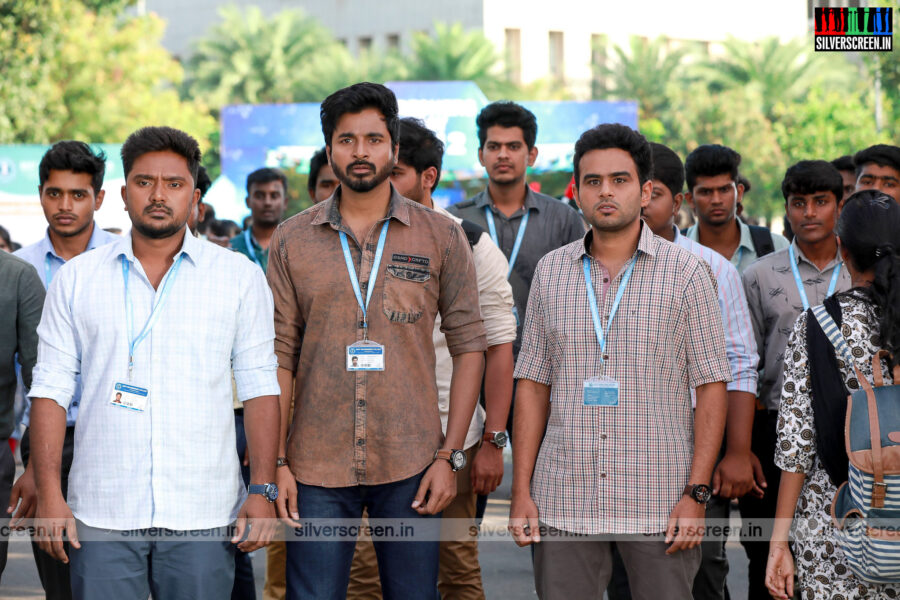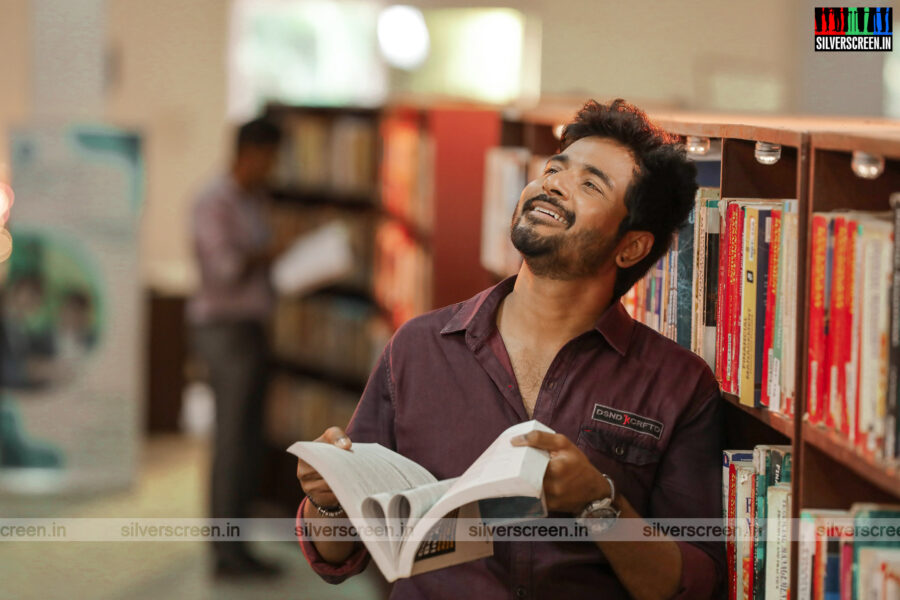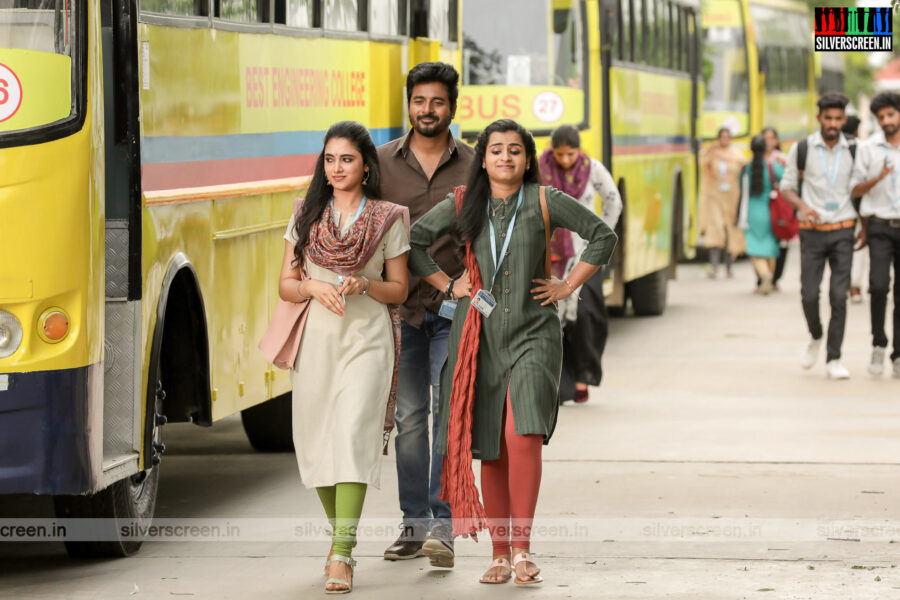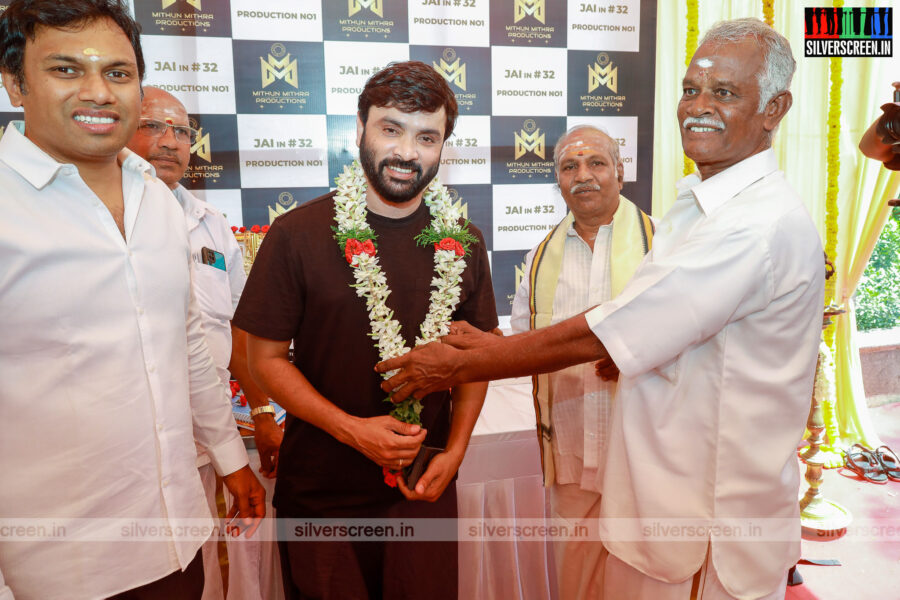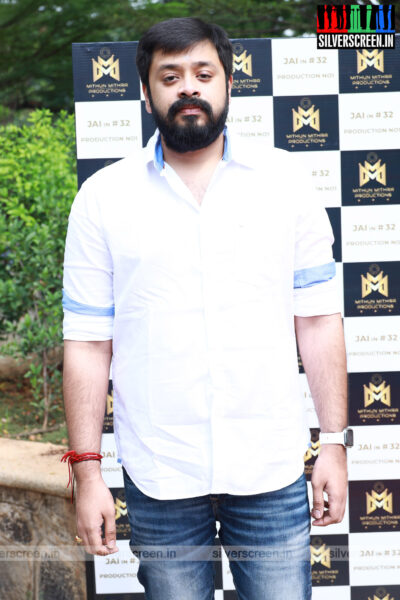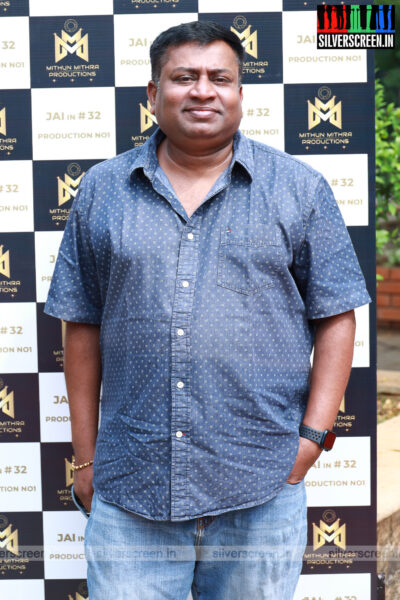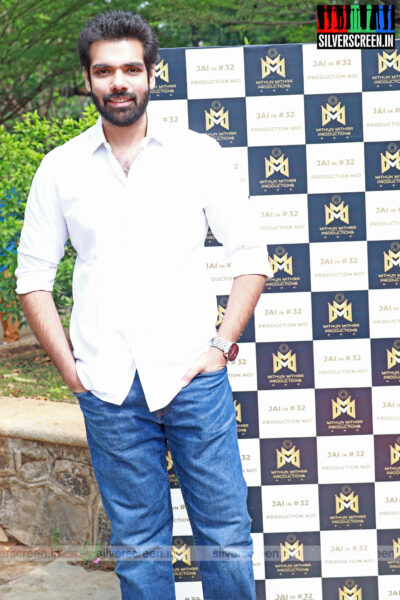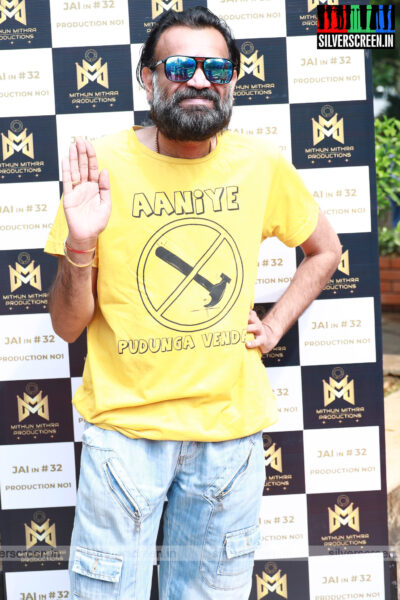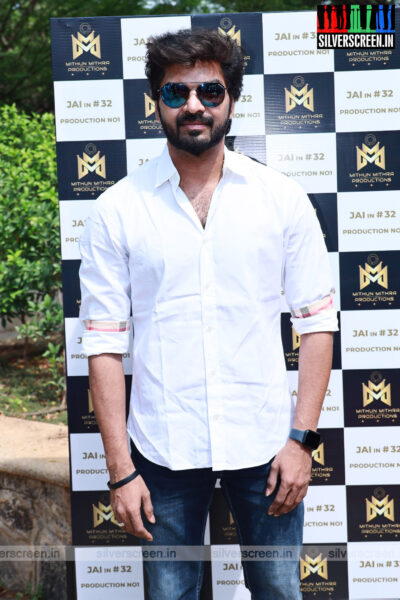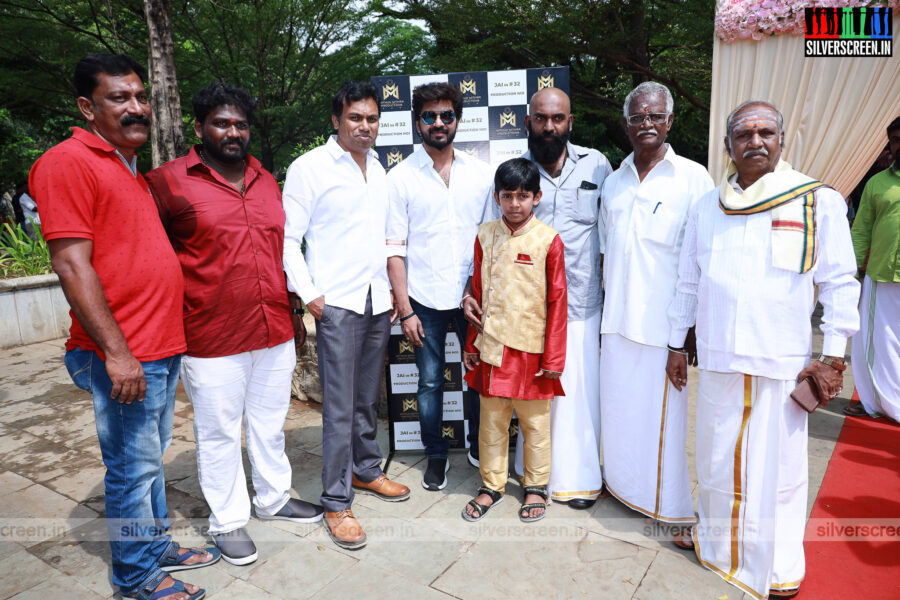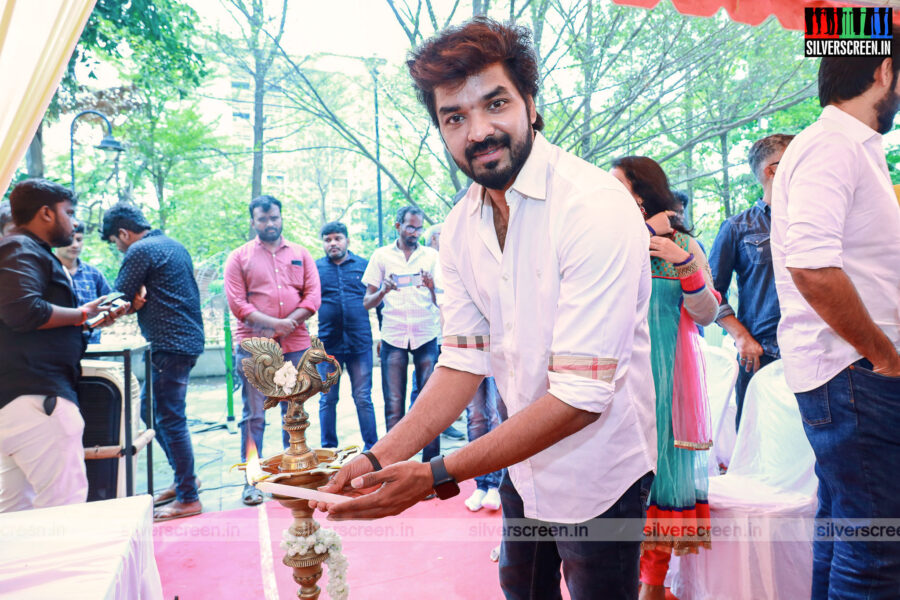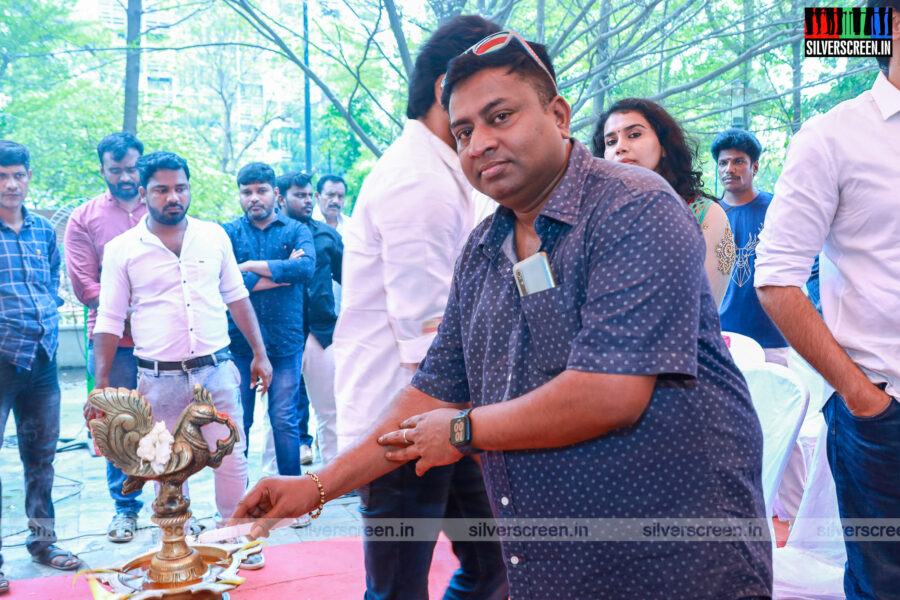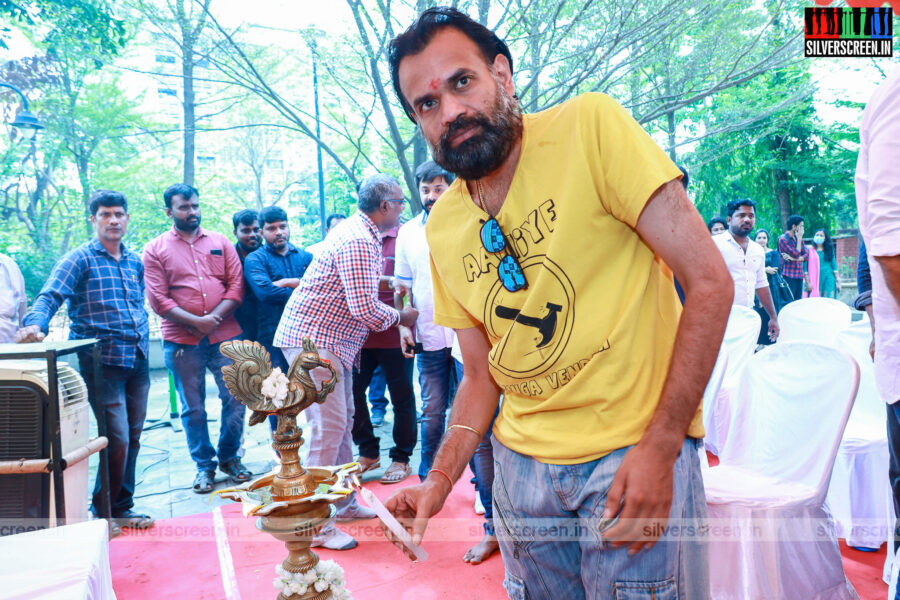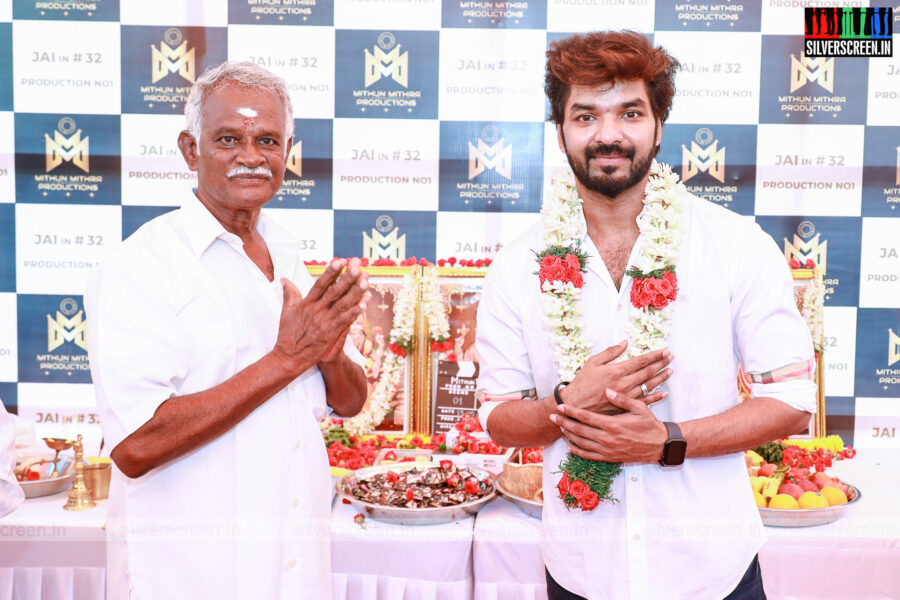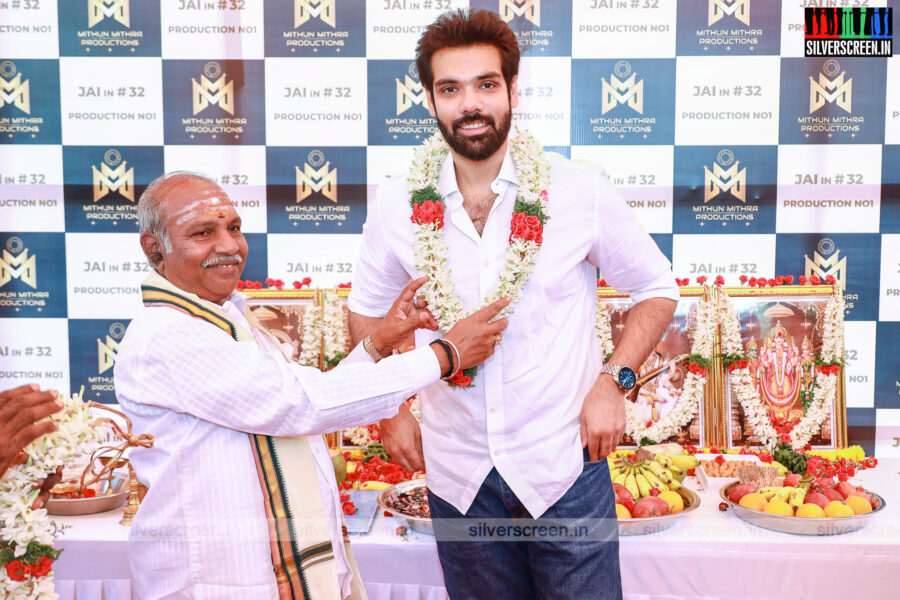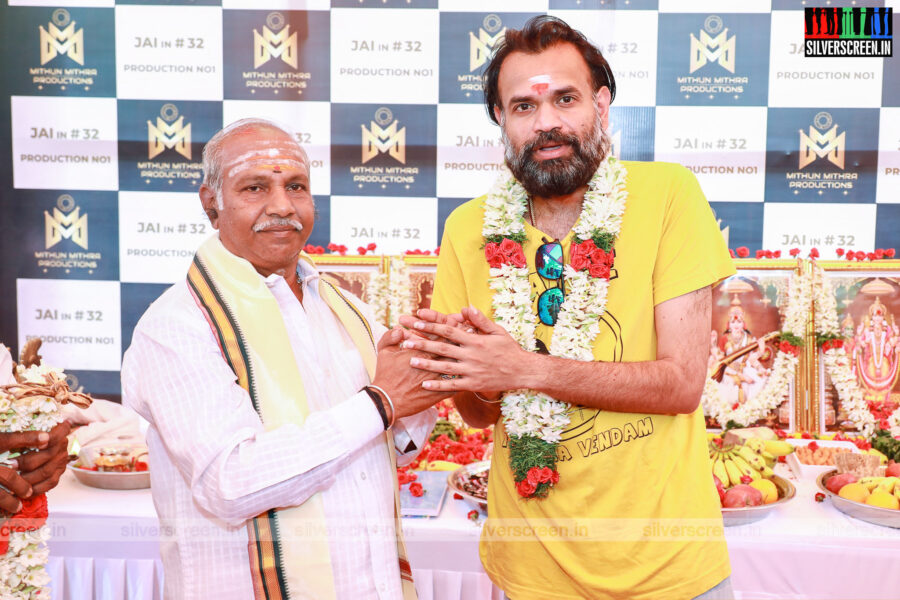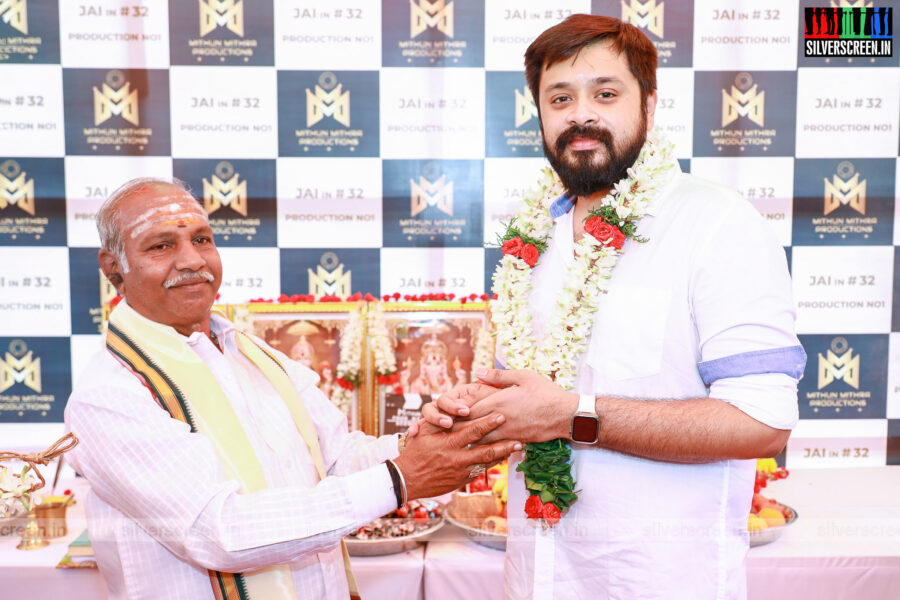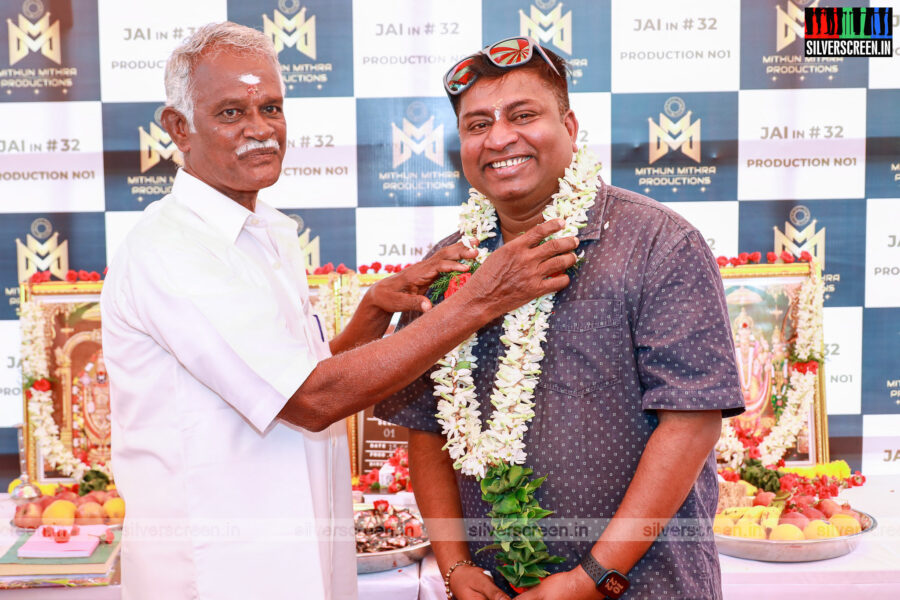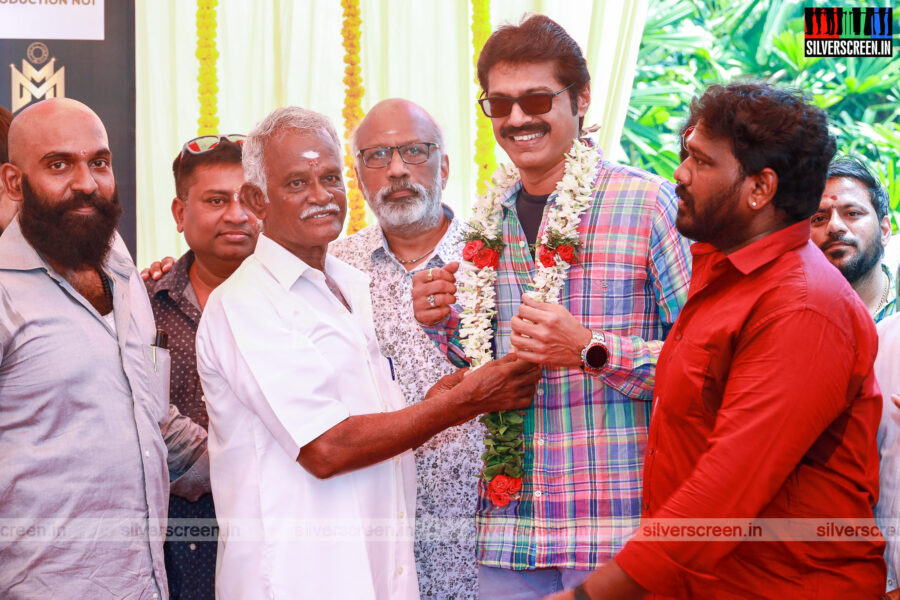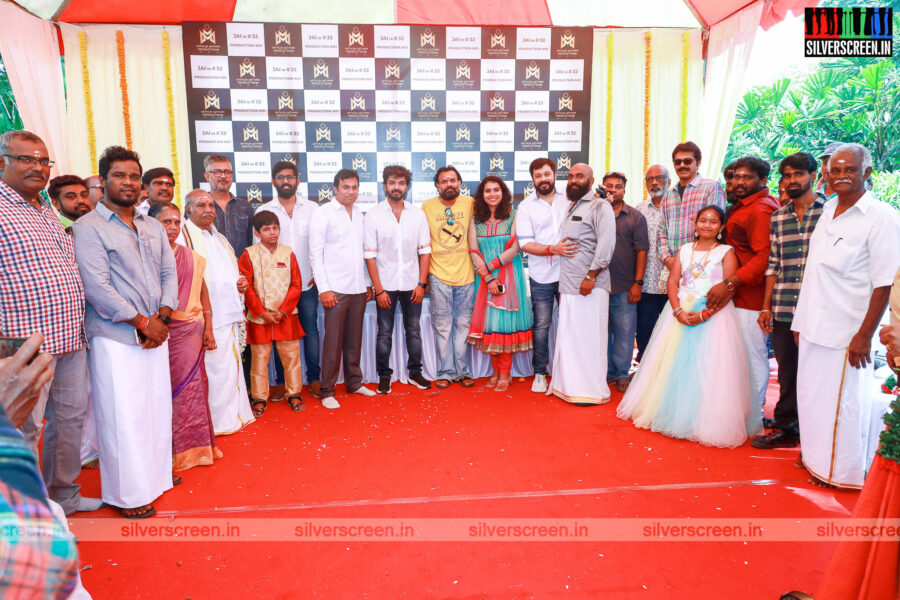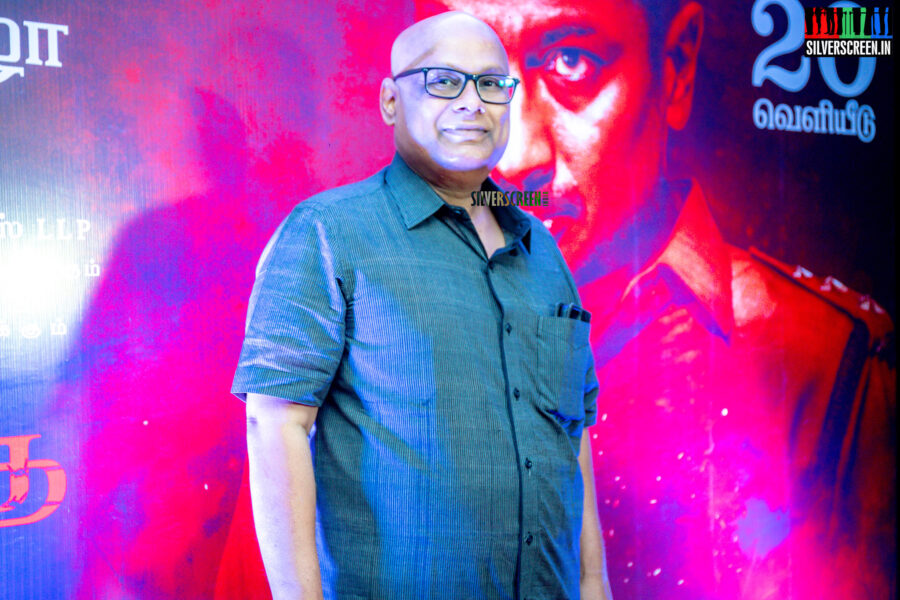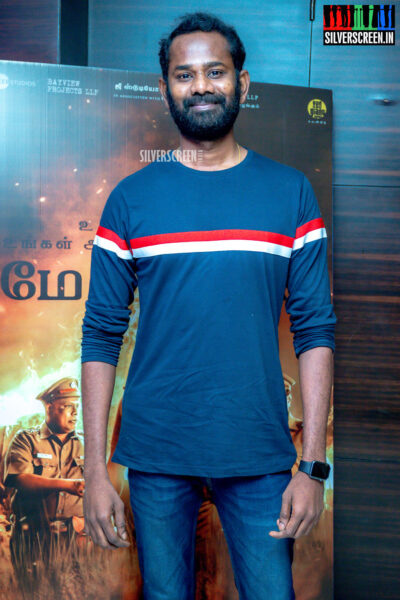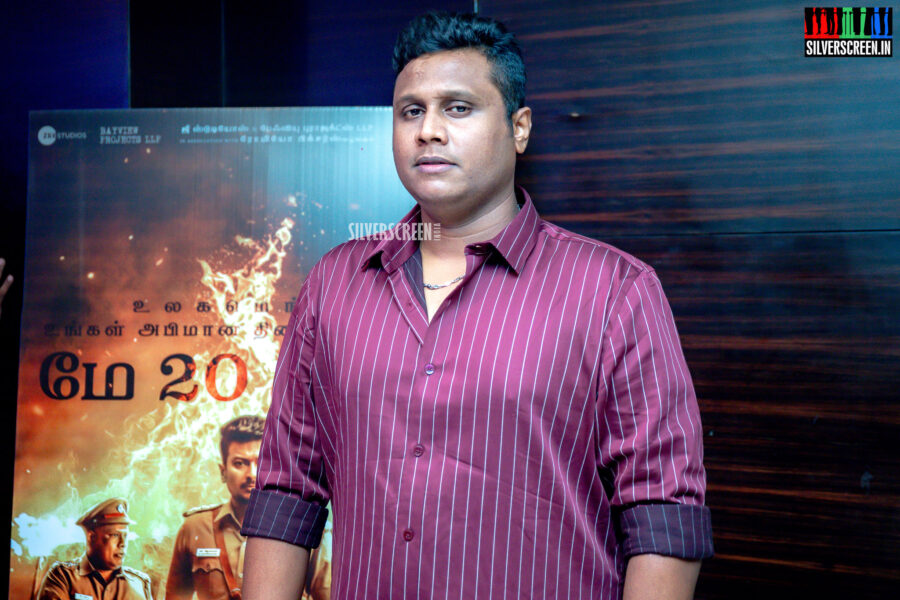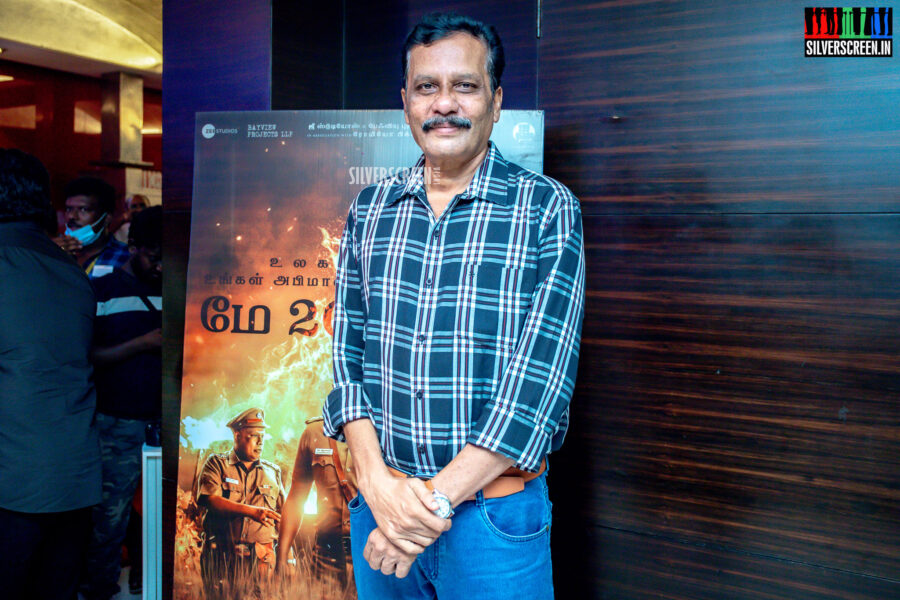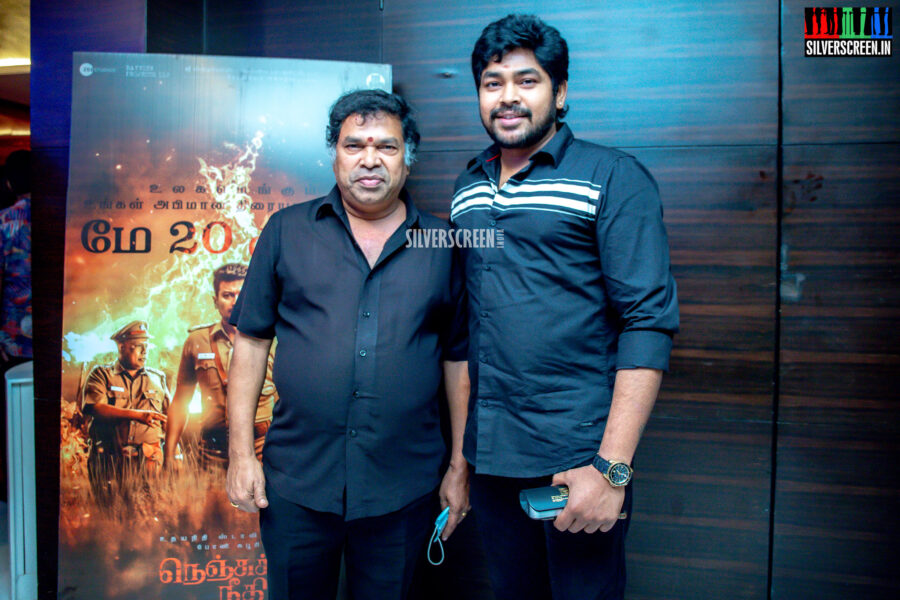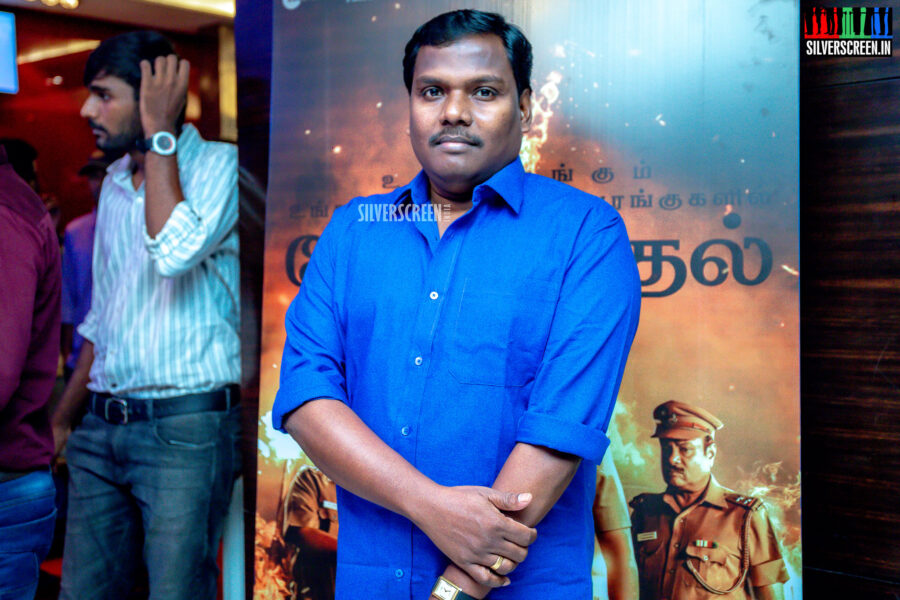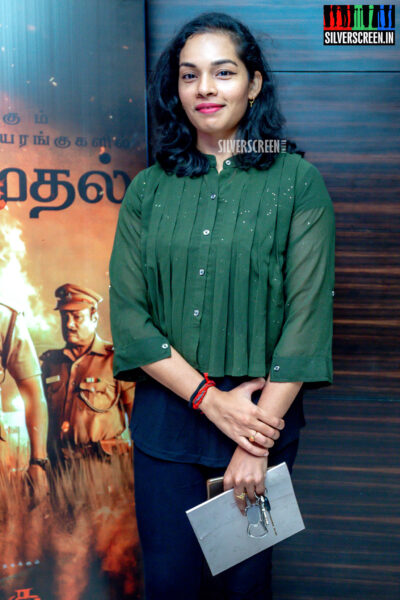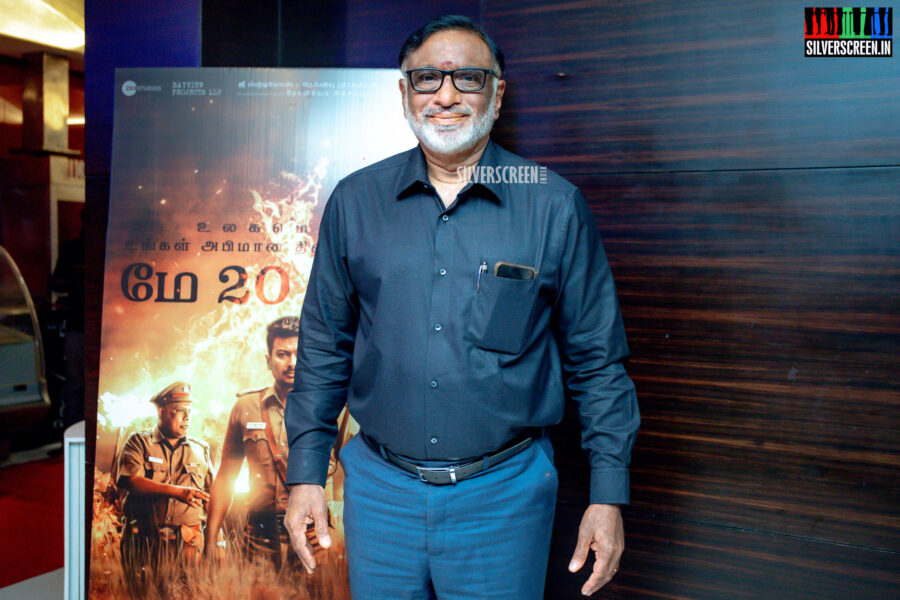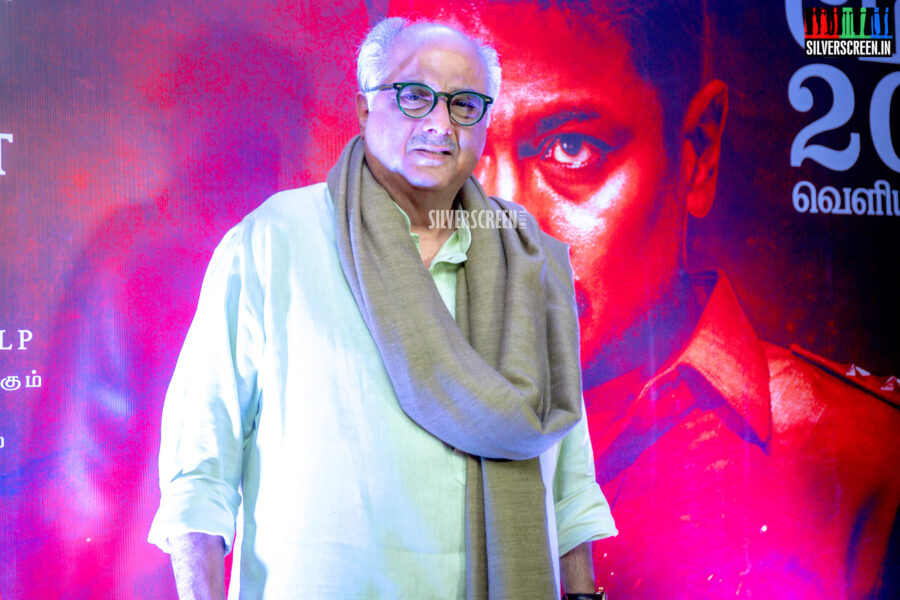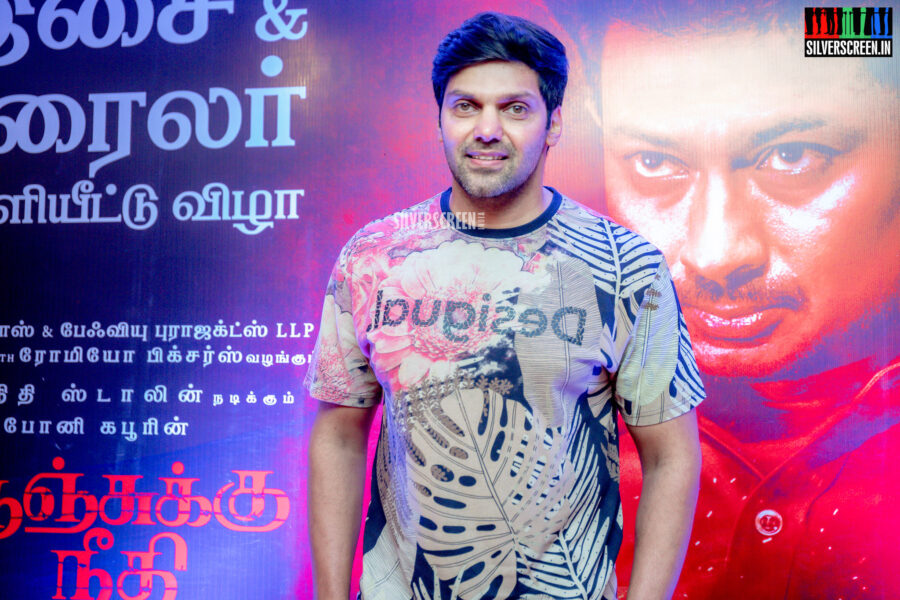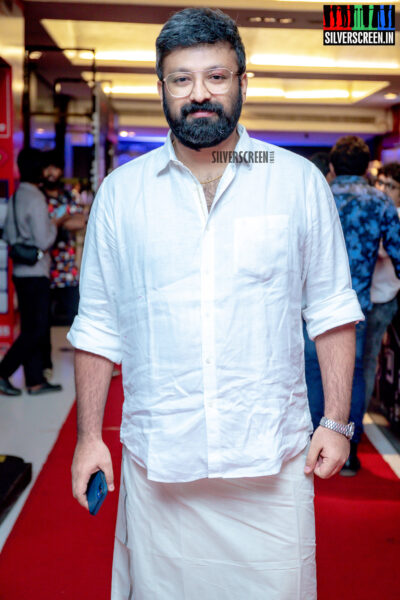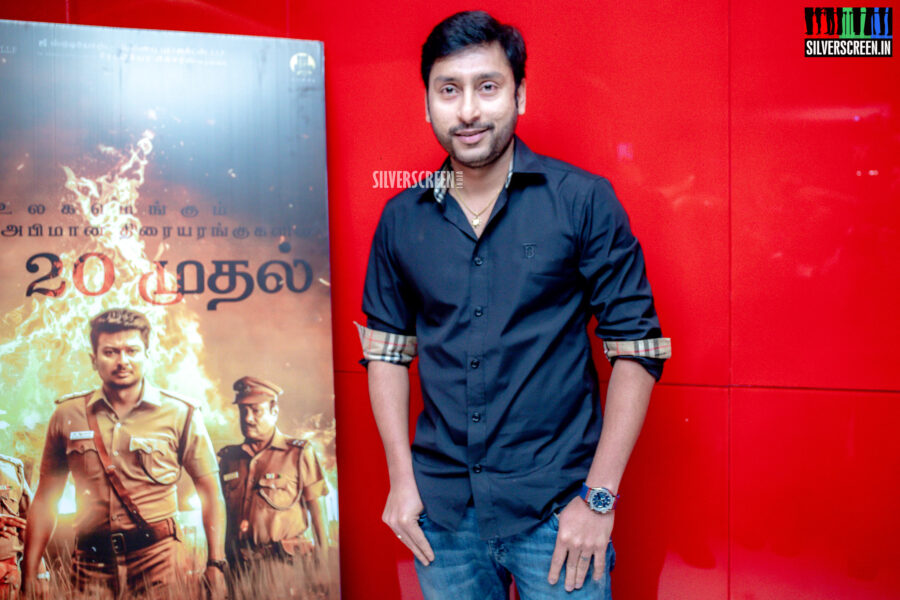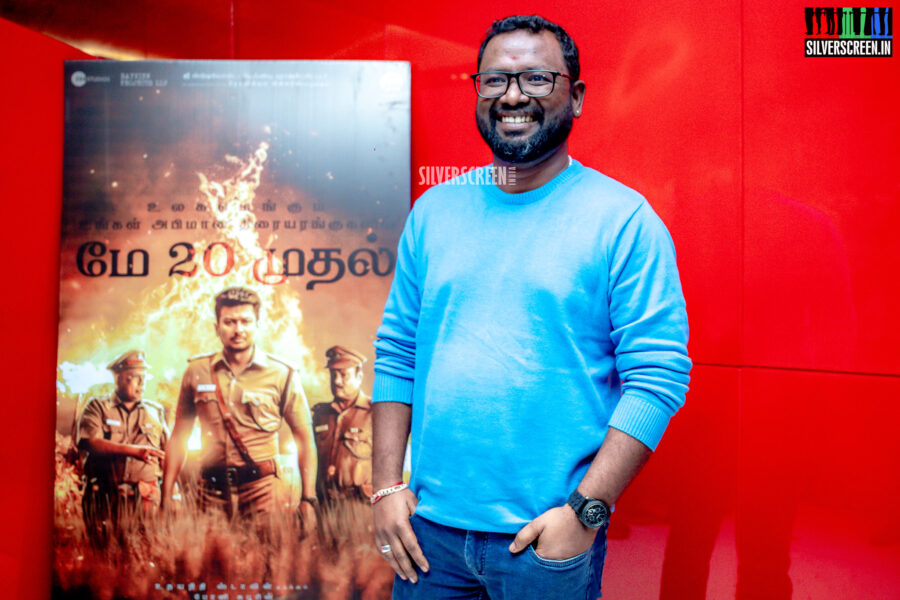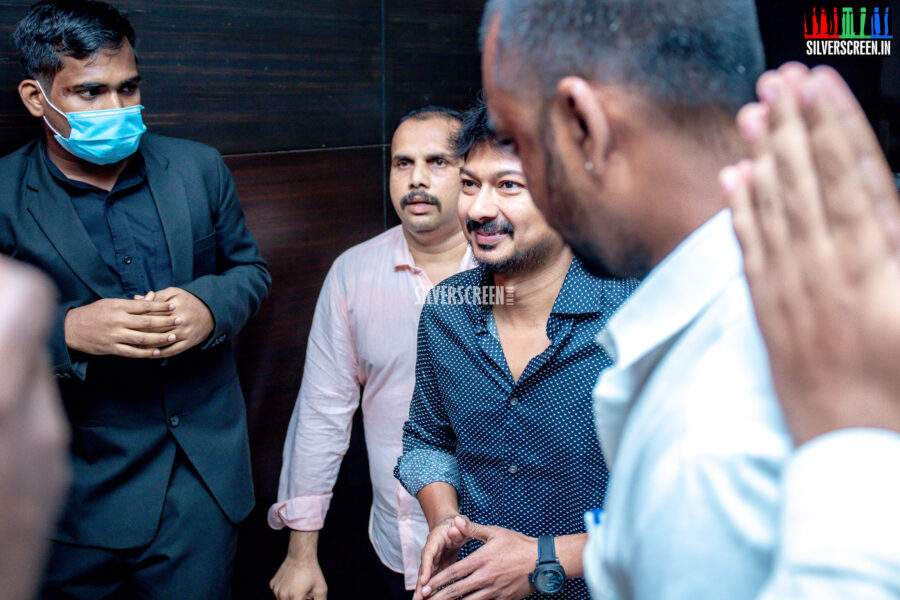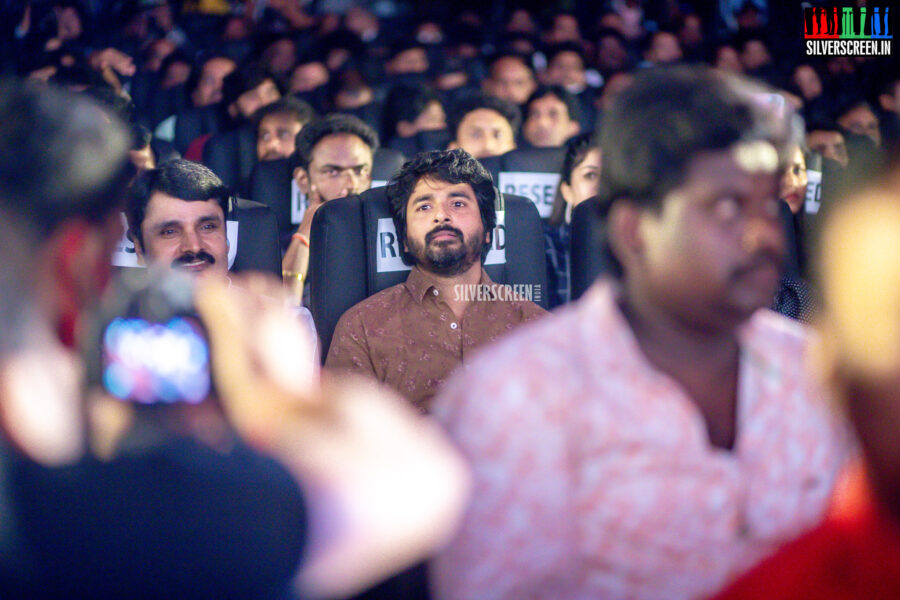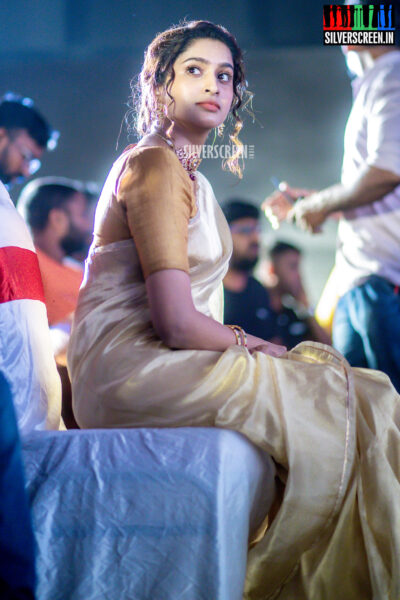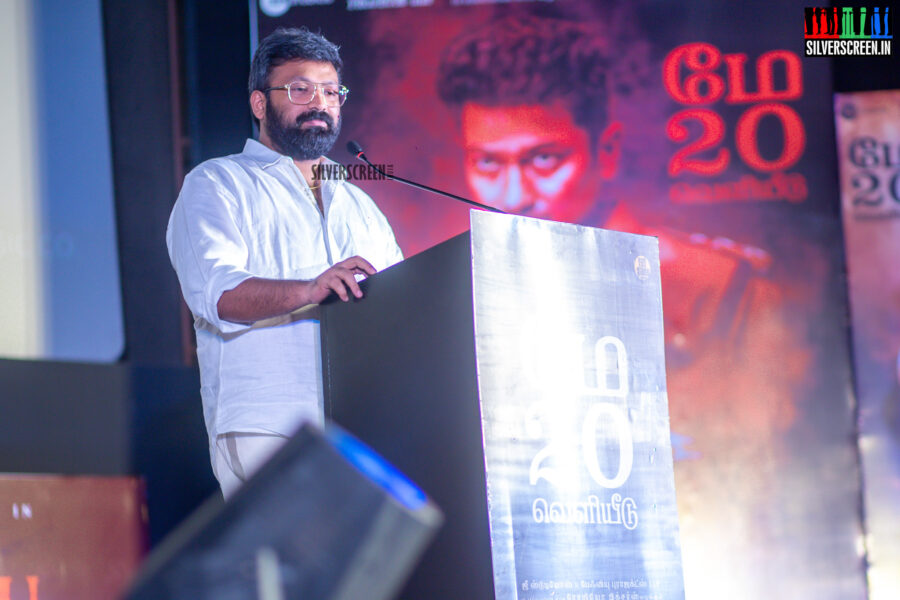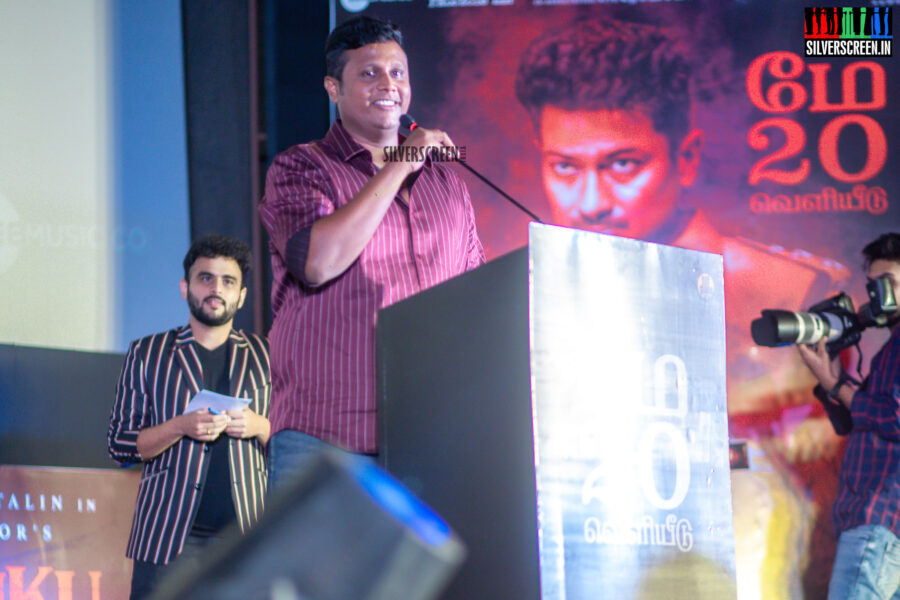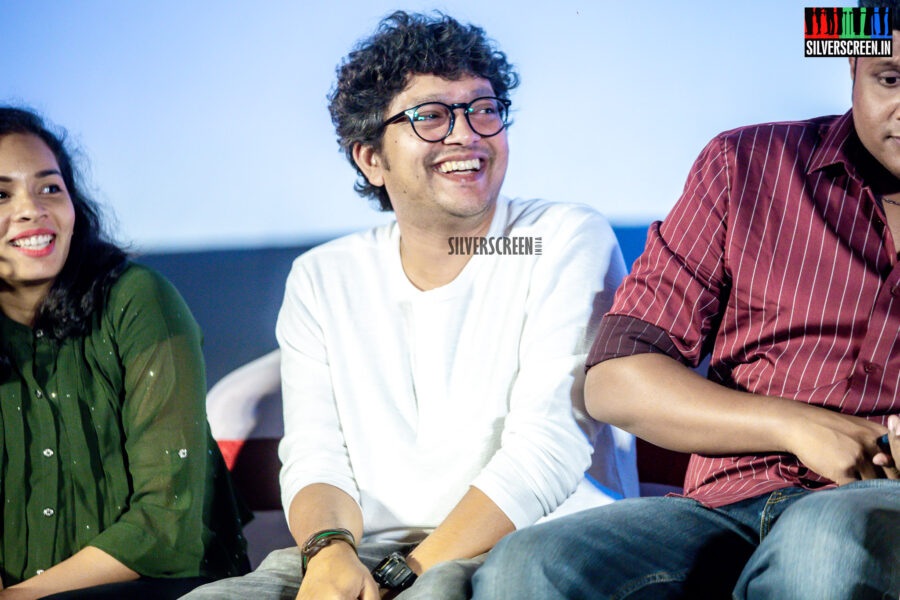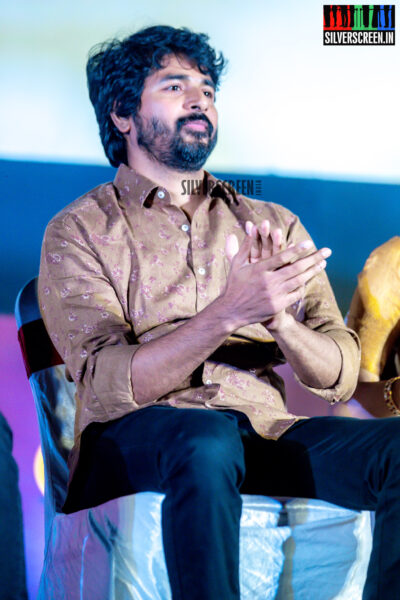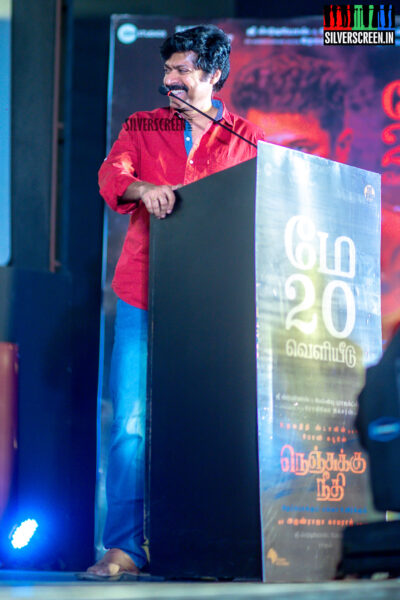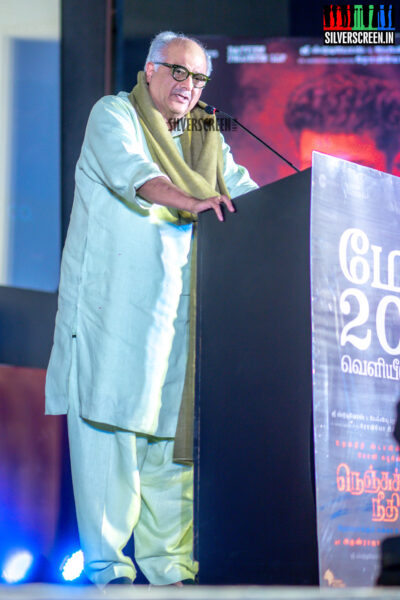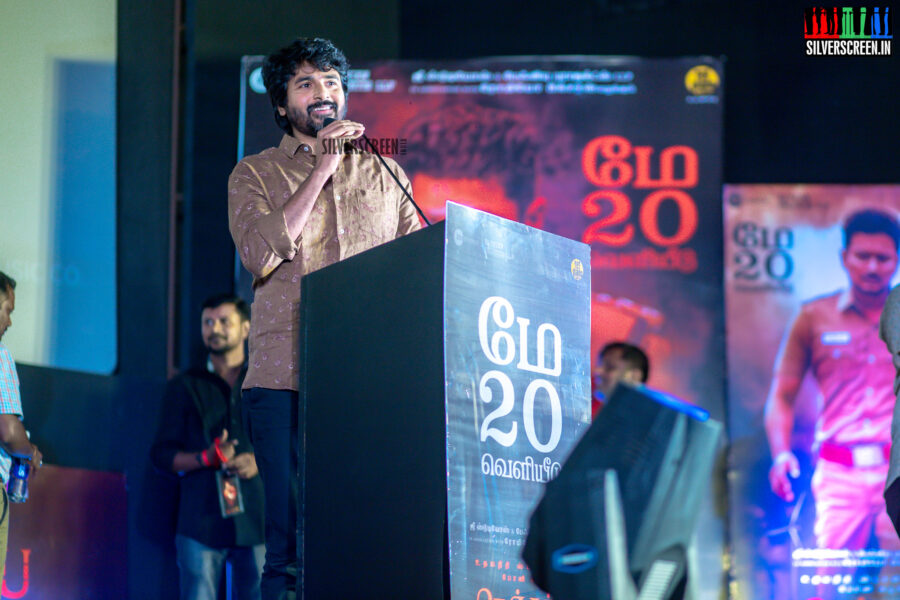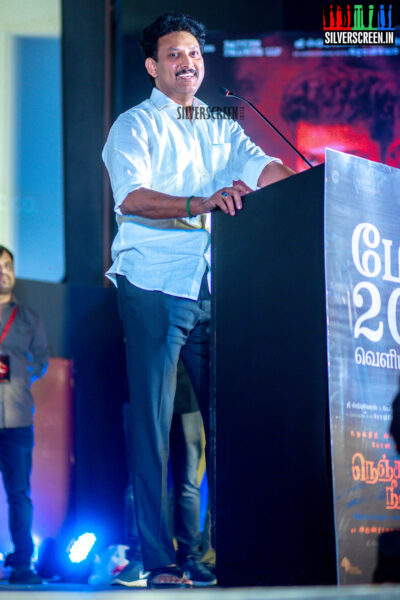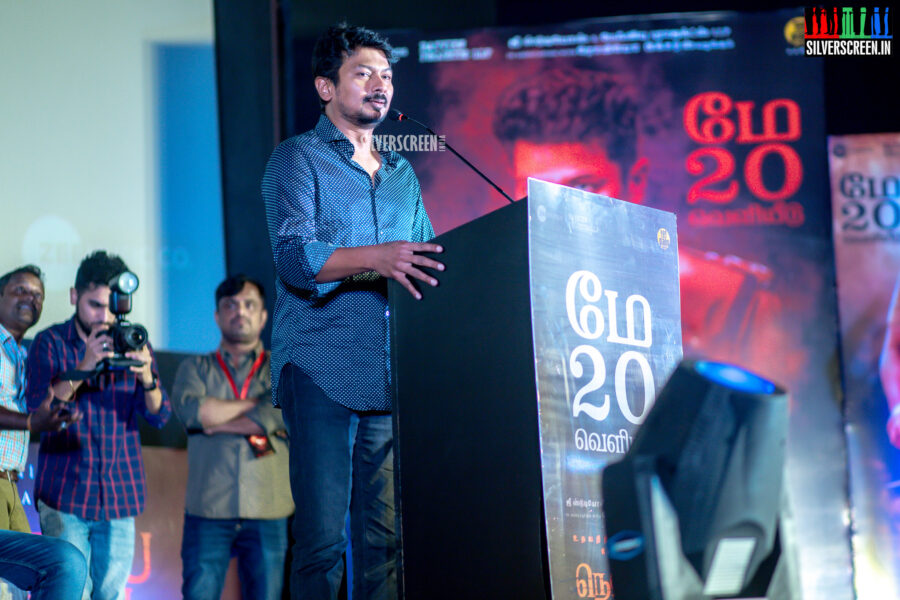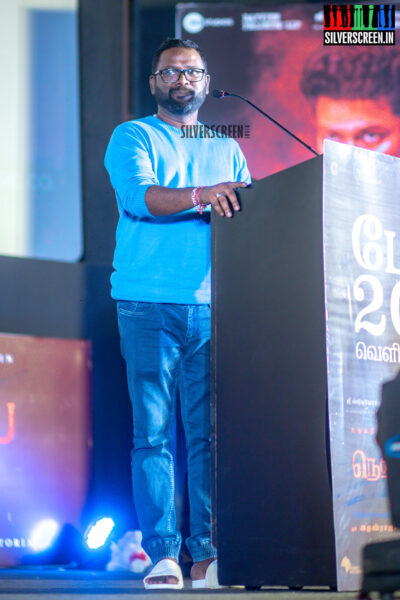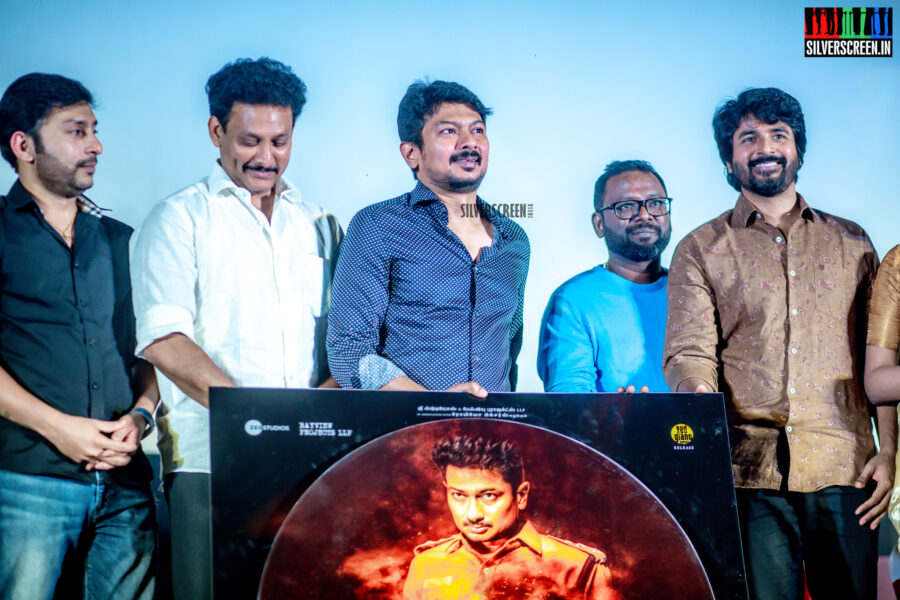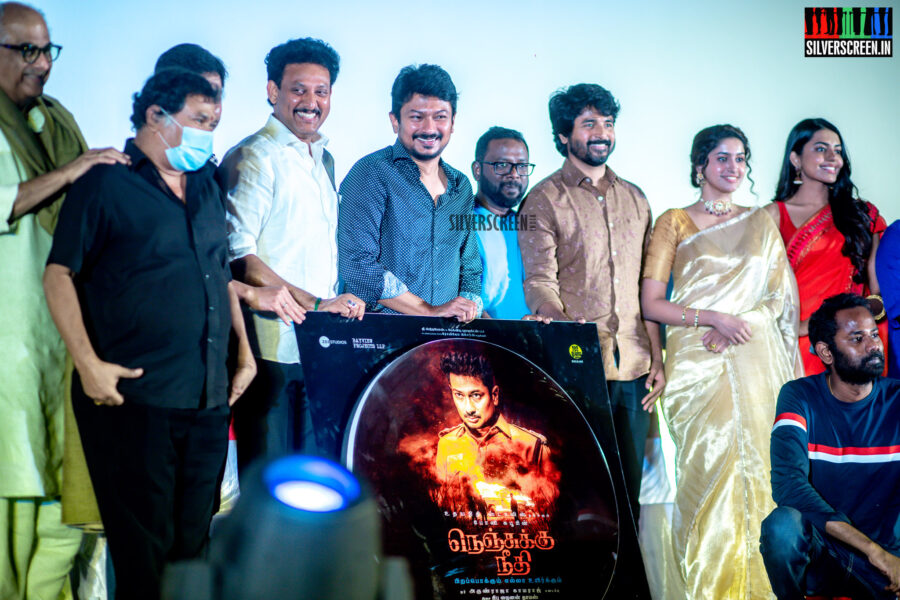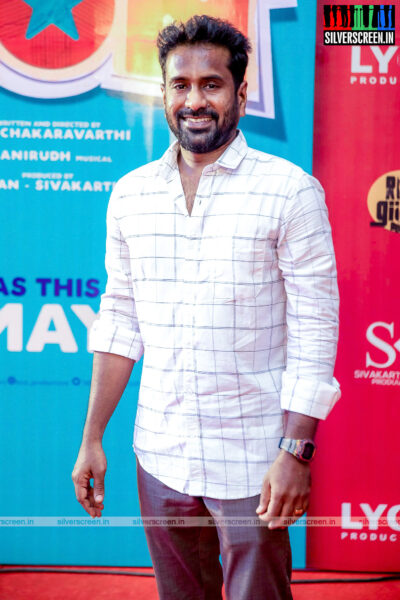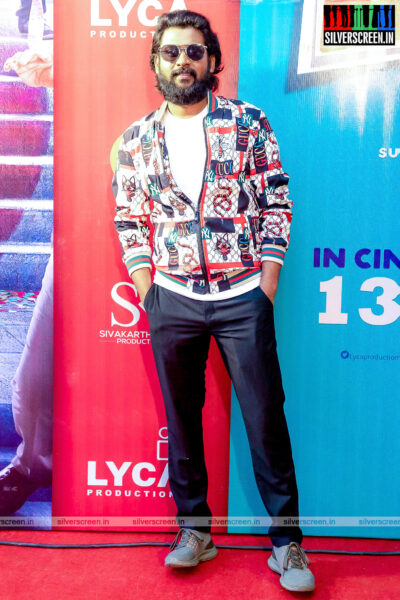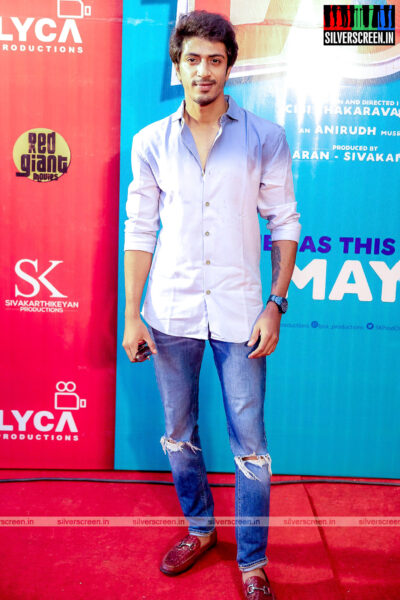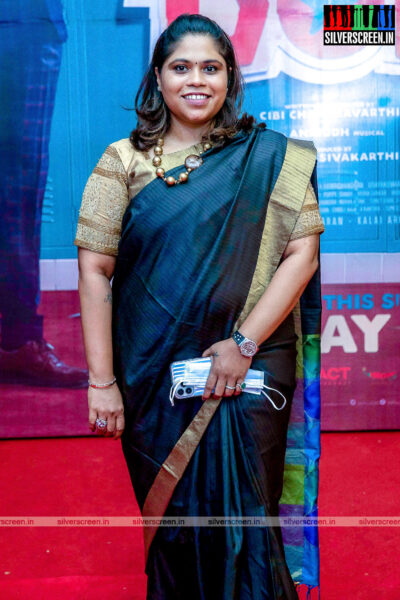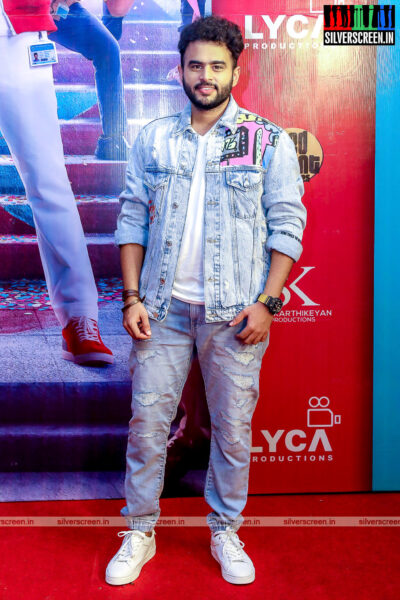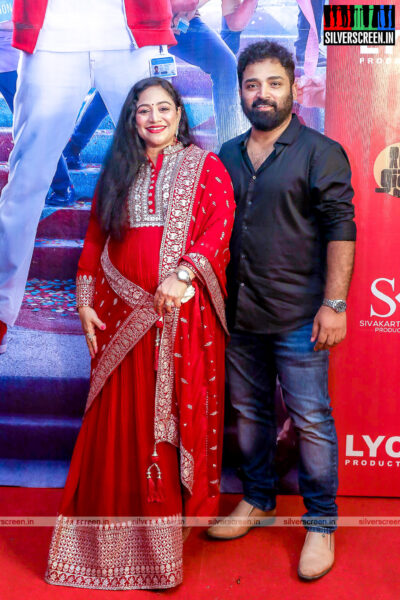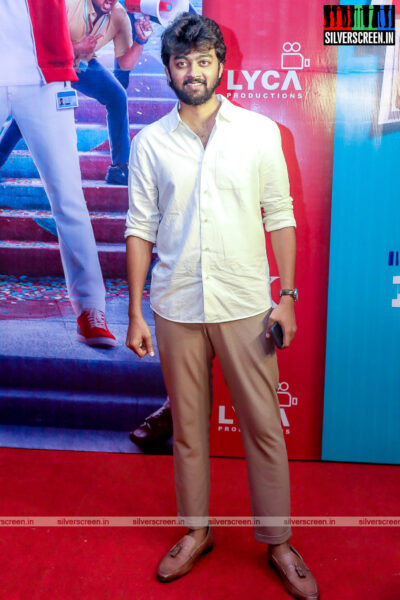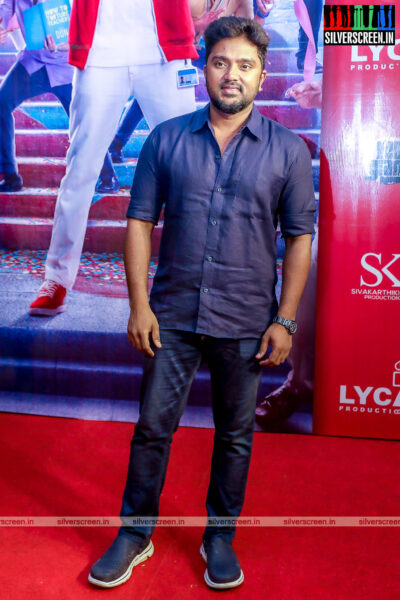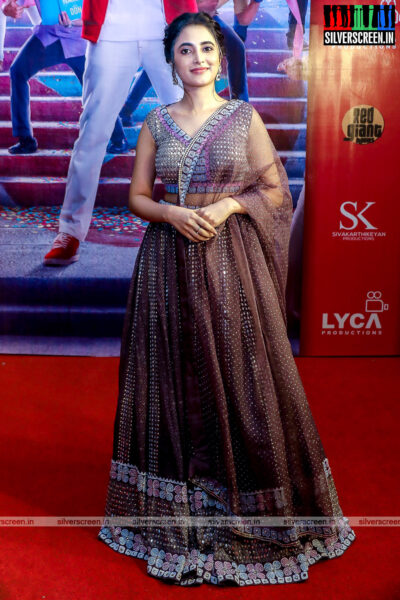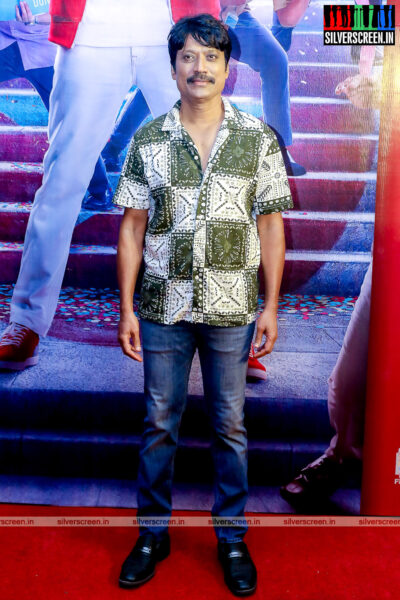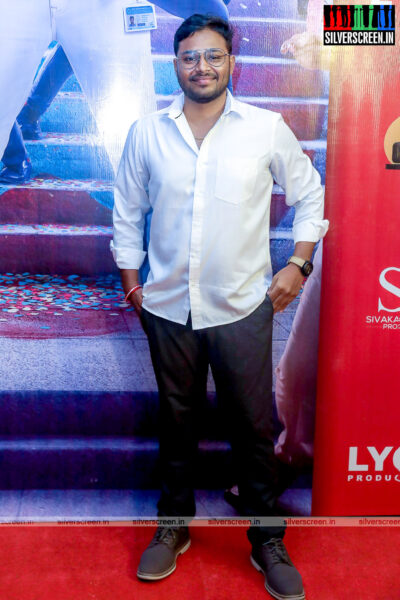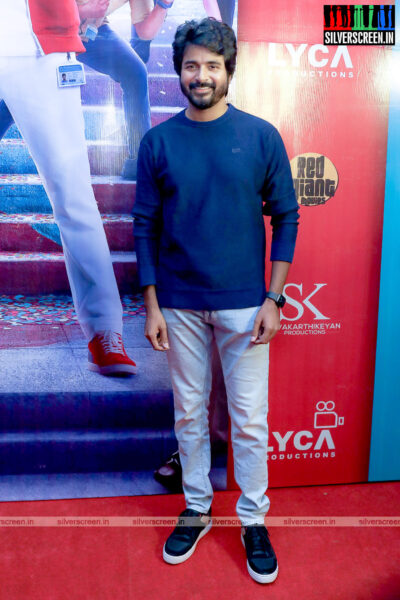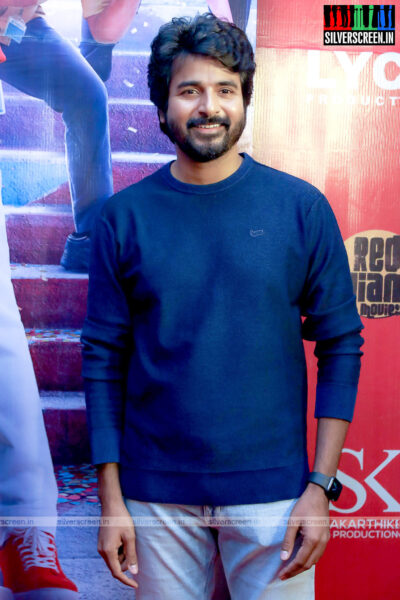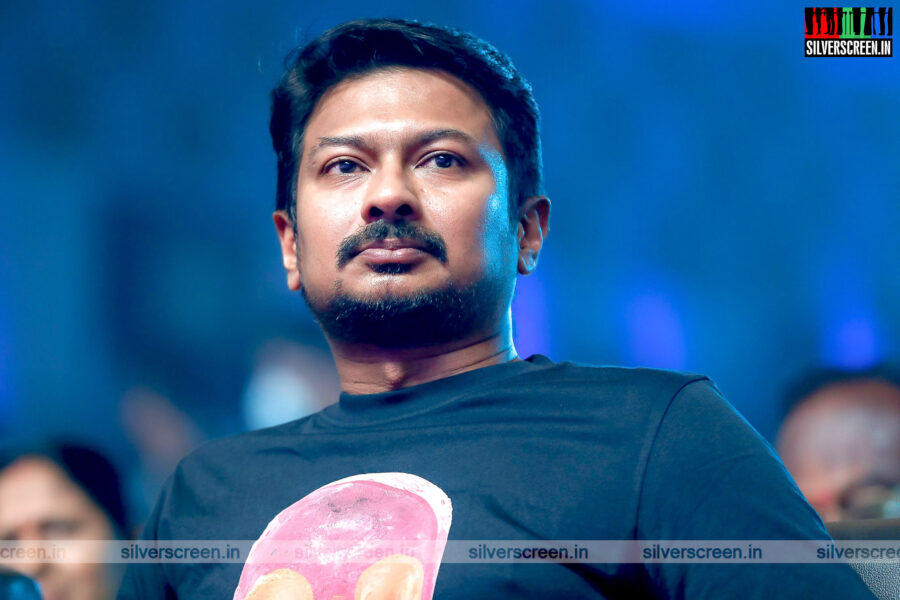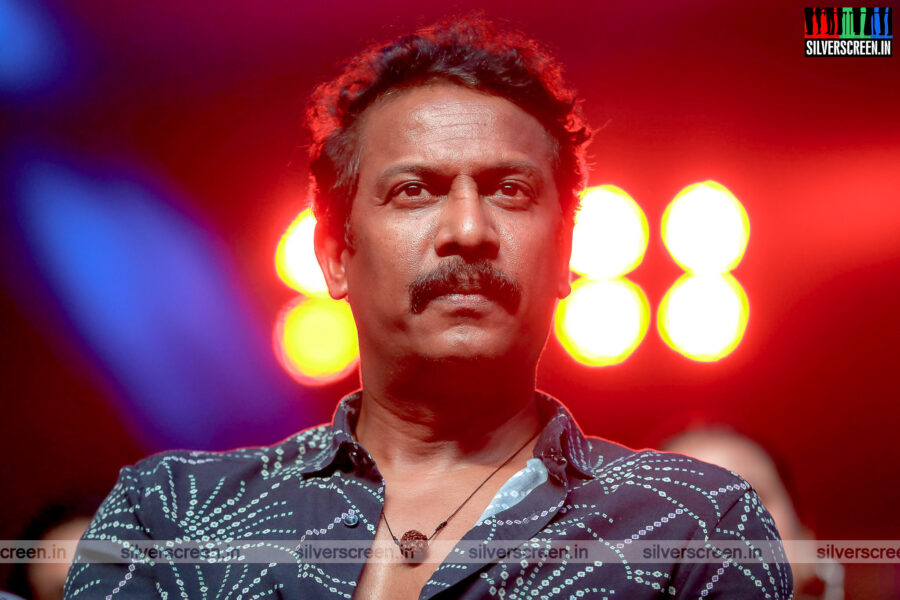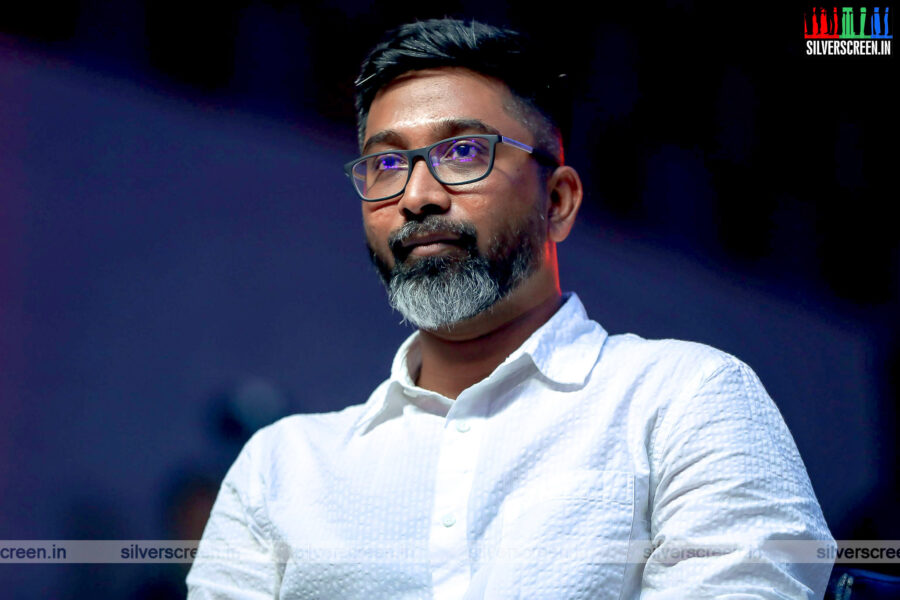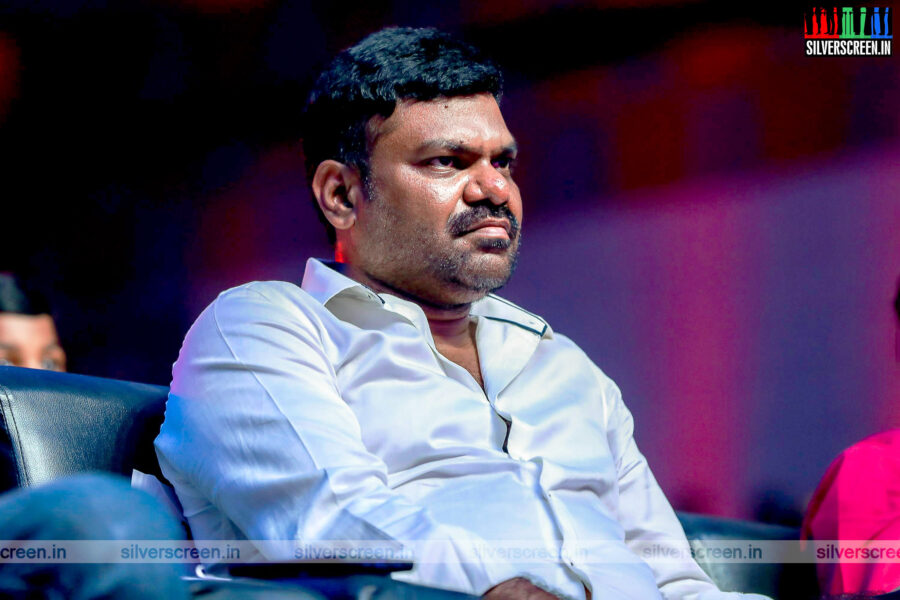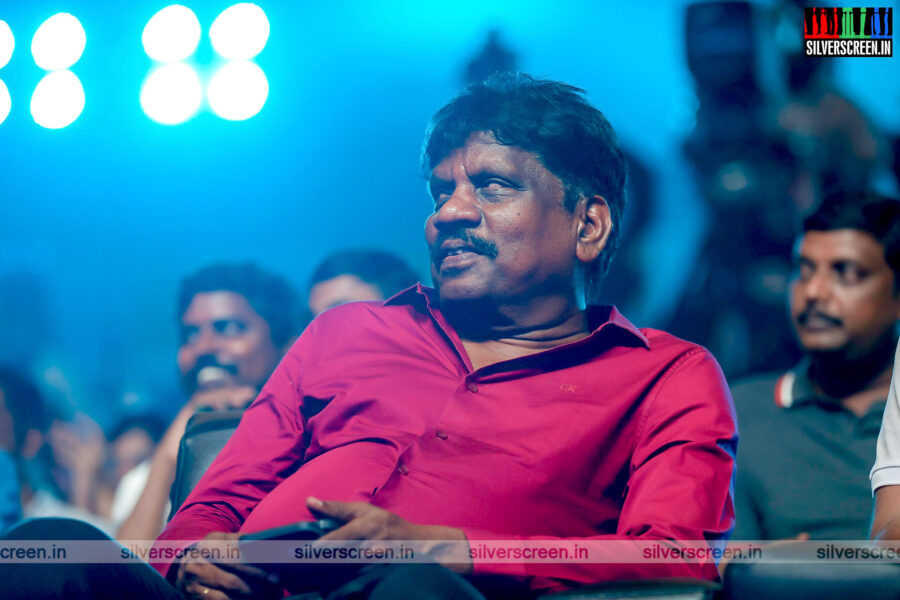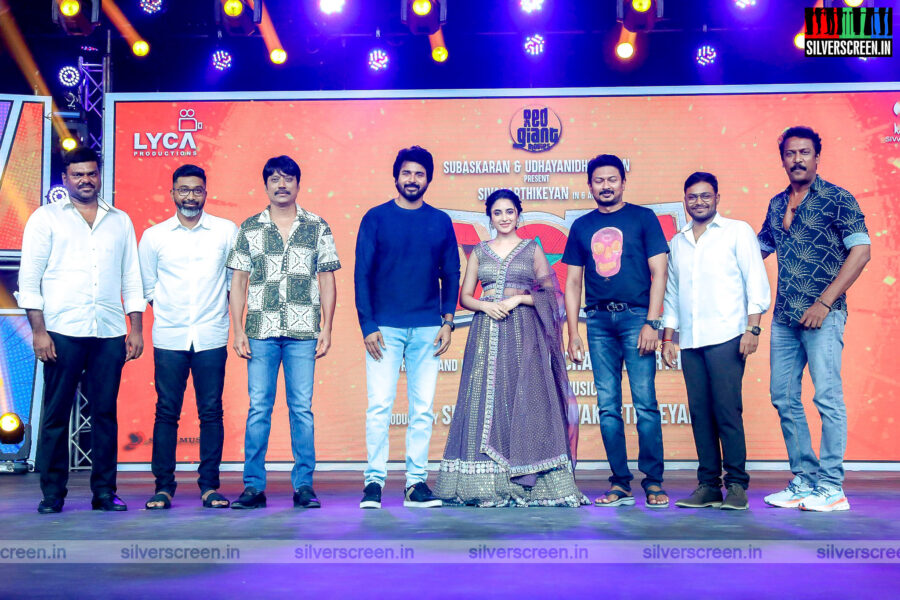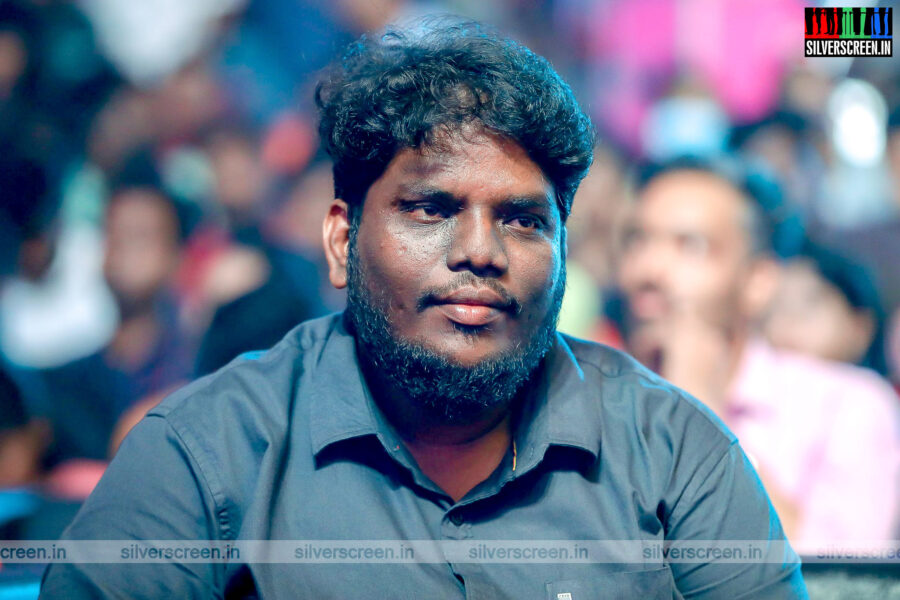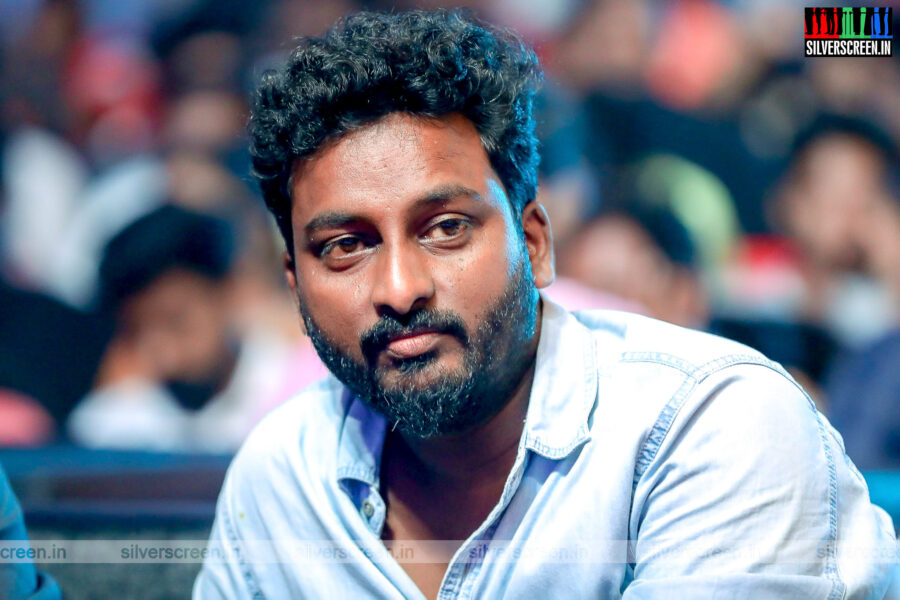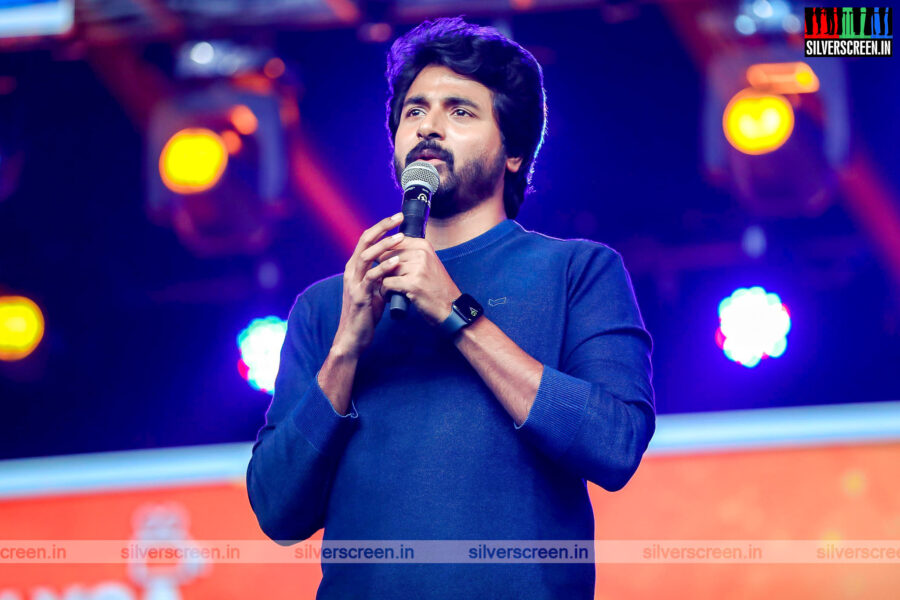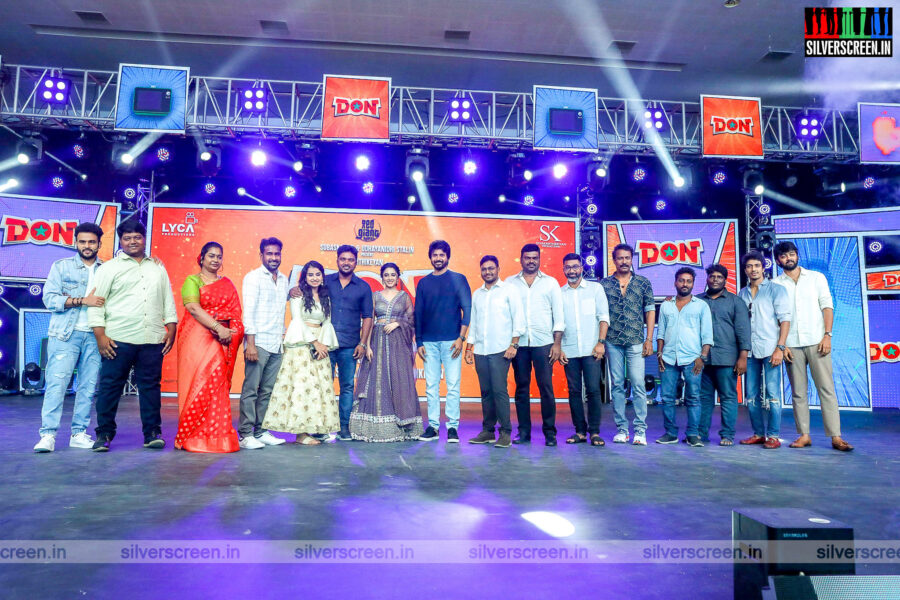Starring #Nayanthara, Ritvick and others.
Director: GS Viknesh
DOP: Thamizh A Azhagan
Editing: Selva RK
Music Director: Vishal Chandrasekar
Producer: SR Prakash Babu, SR Prabhu
Banner: Dream Warrior Pictures
Section: Movies
Jo and Jo Review: A Fascinating And Frustrating Teen Comedy
Actor Thomas Mathew has become the most relatable face of Malayali male adolescence. In his debut film, the highly acclaimed Kumbalangi Nights, he was the sensitive younger sibling trying to fix his dysfunctional family. He played a diagonally opposite character in Girish AD’s Thanneer Mathan Dinangal (2020), a film that had its feet planted firm on everyday life, as a high schooler clumsily navigating the real world. Mathew is not an exceptional actor, but his screen presence moves the viewer. He brings to the screen the angst and frustrations of the average boy to which Malayalam cinema has rarely paid attention. Mathew erases the romantic image of adolescence and reveals the acne and imperfections.
In Thanneer Mathan Dinangal, during the school picnic at a hill station, while his classmates are sitting around a campfire, singing and making memories, Jaison is curled up in the back of the bus, exhausted from motion sickness. In Jo and Jo, he plays Jomon, the 17-year-old younger sibling in a lower-middle-class family in countryside Kerala, who suffers from extreme social anxiety. When he is nervous, he must defecate, a condition that becomes the butt of many jokes in the film.
Directed by Arun D Jose, Jo and Jo is a teen comedy set during the second pandemic-induced lock-down in Kerala. Before getting into the central issue, the film takes one through moments reminiscent of popular memes about the lock-down days. Youngsters attend virtual classes distractedly. You see them trying their hands at cooking meat and smoking cigarettes, going on fishing expeditions and trying out novel tricks to fool the cops on the lookout for lock-down violators.
Sure, it is fun and relatable to a large section of the audience, and Arun, who knows the commercial potential of these little slice-of-life moments, obsessively hangs on to them. From every rare quiet interlude, he hurriedly cuts to these scenes of Jomon and his friends, Manoj (Naslen Gafoor) and Eby (Melvin G Babu), indulging in tomfoolery.
The world comes crashing down for Jomon when he comes across a love letter, which he assumes, is addressed to his sister, the 21-year-old Jomol (Nikhila Vimal), by her boyfriend. The boy who had been whiling away the lock-down days roaming the village with his friends, suddenly feels his masculinity attacked. It is a natural transformation, given the culture he is bred in, where women in a household are the men’s burden. The female species, Jomon has learnt from movies and his surroundings, are prone to straying, ruining the family name, and men must stop them
Arun D Jose, after the film’s release, revealed on social media that Jomol’s construct was inspired by the iconic feminist short story, The Yellow Wallpaper, by American writer Charlotte Perkins Gilman. It is a shame this powerful piece of literature could move the filmmaker only so much to create a narrative where the centrepiece is the sight of boys being boys. But, in all fairness, Jo and Jo display a rare awareness of female existence in countryside Kerala. Amidst the chaos the boys create, the film makes space, albeit marginal, for Jomol to express the acute loneliness and lack of freedom she experiences in daily life.
There is an instance where she asks Manoj to let her accompany them to their fishing spot. “How can we smoke when she is around”, Jomon whispers to his friends, and by the time she changes into her outside clothes, the boys leave. Shot without any embellishment, the scene is poignant, topped with a shot of Jomol gazing wistfully at an empty courtyard. While the boys are always together, Jomol leads a lonely life devoid of misadventures and chaos. Her friendships are confined to chat boxes. She occupies little space in the world and the house, a reality the women among the audience would easily relate to.
And Nikhila Vimal gets to perform memorable, deliciously violent outbursts. An angry Jomol screams. She bites her sibling on his arm and tackles him on the floor. When accused of committing an offence (in orthodox small-town Kerala, falling in love is an unpardonable transgression), she pounces on the boy like a wounded animal. And one must admit, it is utmost gratifying to see the mean teenager getting his ass kicked.
Jo and Jo has a rough visual texture reminiscent of the old home videos. The camera jerks and breaths. Colours aren’t neatly arranged on a palette but are allowed to run wild. The houses are gloriously shabby, with abundant signs of human life. The walls have hand stains and the furnishing and properties (other than Jomon’s expensive laptop) tell of the family’s humble financial status. Govind Vasantha’s background score is youthful, using folksy sounds and using old popular film music in unlikely spots, smoothly traversing the myriad emotions the film goes through. Everything about the film exudes a warm sense of honesty.
But the film aspires to be little more than a weekend stressbuster, a family favourite at the box office. In the end, there is little to take home other than the humour. Naslen Gafoor and Melvin are a riot throughout the film, especially the former who is proving to be a marvellous performer in comic scenes. You see that the feminist lessons the film imparts through Jomol are based on a hypothetical transgression ﹣an imaginary romantic affair. Arun discusses what-ifs and why-nots without letting his female protagonist breach any moral code, careful not to make the audience uncomfortable. Jo and Jo is about male teenagers making merry; Jomol is merely the subsidiary unit, like the CSR wing, that exists to make the establishment look good.
*****
This Jo And Jo review is a Silverscreen original article. It was not paid for or commissioned by anyone associated with the movie. Silverscreen.in and its writers do not have any commercial relationship with movies that are reviewed on the site.
Arunraja Kamaraj Interview: On Directing ‘Nenjuku Needhi’, Keeping the Essence of ‘Article 15’ Intact in the Remake & More
Tamil singer and lyricist Arunraja Kamaraj, who made an impressive debut as a director with Kanaa (2018), is awaiting the release of his sophomore project Nenjuku Needhi, the Tamil remake of the hit Hindi film Article 15 (2019).
Article 15 was also critically acclaimed for its hard-hitting commentary on caste-based discrimination. It revolves around a police officer (Ayushmann Khurrana) who investigates the case of a missing Dalit girl in a remote village, after two Dalit girls are found hanging from a tree.
In the Tamil remake, actor-politician Udhayanidhi Stalin will be reprising Khurrana’s role. Nenjuku Needhi also stars Aari, Tanya Ravichandran, Shivani Rajashekar, Yamini Chander, Suresh Chakravarthi, Ilavarasan, Mayilsamy, Ramesh Thilak and Sayaji Shinde.
Ahead of the film’s release on Friday, Arunraja speaks to Silverscreen India about choosing a remake as his second directorial project, what the film means, and more.
“I was working on other scripts, and I also had a prior commitment with another company. At that time, I got an offer to work on this film, back in early 2020. I also came to know that Udhay sir was on board. I thought we could finish it in six months and so, I requested permission from the company I was associated with. Then, I began to work on the script and the project took off,” he says.
On having Udhayanidhi play the protagonist, Arunraja says he purely considered him as an actor and his political background did not come into play. “As far as cinema is concerned, he is a producer with a big banner and he has also acted. Even before Kanaa, I had been trying to write scripts for him. When I got the opportunity to collaborate with him on my second film, I was thrilled.”
The director notes that a team was formed to design the look of Udhayanidhi’s character’s and transform the actor accordingly. “We roped in look transformation artists and got several ideas. Anu Vardhan ma’am, the film’s costume designer, was also involved in the process. She worked with Udhay sir to achieve the appropriate look, including shaving his mustache and trimming his beard, which he had been a bit apprehensive about. However, once the look was achieved, both he and the team were satisfied.”
Although Article 15 does not directly refer to any real-life incident, the film primarily set in Uttar Pradesh is loosely based on the 2014 Badaun gang-rape case and the 2016 Una flogging incident. Arunraja says they have kept the essence of the original intact in Nenjuku Needhi, while making a film of their own. “It is definitely not a frame-by-frame remake. We’ve made significant changes to adapt it to the local culture. The remake will feature scenes taken from Article 15, but they won’t be exactly the same. We have also made changes to the screenplay.”
The director has once again collaborated with his crew from Kanaa. Nenjuku Needhi is shot by cinematographer Dinesh Krishnan and edited by Ruben. It has been certified U/A. Dhibu Ninan Thomas has composed four songs for the film, with lyricist duties shared by Yugabharathi and Arunraja himself. “More than my songs, I value Yugabharathi’s. I am a fan of his work. His writing is simple but content-driven. That is what was needed for the film.”
Arunraja, who has also sung for the film, feels his creativity comes out best through writing and directing. “If I am working for another director, I need to learn their requirements and deliver accordingly. When it’s my own film, I have the freedom to write and structure scenes as I see fit. My foremost wish was always to be a director, and my journey has just started.”
While the film was being made, Arunraja faced a great personal loss. His wife Sindhuja succumbed to Covid-19 complications in May 2021. Asked how he managed to navigate through this while making a film with such an intense subject, the director says, “It is a state of mind which I don’t know if I can express. She wanted me to become a big director and if I was too hung up on my feelings, I knew it wouldn’t happen. At least to fulfil her dream, I had to come out of my grief. She was there with me during the first shoot schedule and was aware of the project.”
Nenjuku Needhi is Arunraja’s second outing as a director. Asked if he sees himself developing a signature style and voice, the filmmaker says, “Kanaa and Nenjuku Needhi fall under very different genres. There is no specific thought process that goes into it. I prefer to take up a subject and work towards delivering it right.”
Nenjuku Needhi tackles issues surrounding caste and discrimination. Lately, Tamil films addressing such issues have been gaining wider recognition as well as facing more pushback. One tackling a sensitive topic like this in the film, the director says, “We are not discussing someone’s personal life. When it is not about that, it is not a sensitive issue. It is something that needs to be discussed. The essence of Article 15 of the Constitution is to not discriminate against someone on the basis of their caste, place of birth, or race. Discrimination is a common issue that we face in our lives, every day. We need to speak out against it. While the issue is sensitive, the law that talks about it and acknowledges it, cannot be sensitive. We need to voice out against such punishable offences.”
Arunraja hopes that Nenjuku Needhi creates conversations on the topic, which will be a move towards progress. “This is not just a story for the oppressed. It is against the law to refer to someone or degrade them by their caste; this applies to everyone. So this cannot be written off as just a film for the oppressed. The way I see it, anyone who causes harm to anybody else, is ultimately wrong. Like our film’s tagline says, we are all ‘Born Equal’.”
Vikram Trailer Starring Kamal Haasan, Vijay Sethupathi, Fahadh Faasil
Movie : VIKRAM
Starring: Kamal Haasan, Vijay Sethupathi, Fahadh Faasil. Banner: Raaj Kamal films International
Produced by : Kamal Haasan & R.Mahendran Written & Directed by Lokesh Kanagaraj Music: Anirudh Ravichander Cinematographer: Girish Gangadharan Action: Anbariv
Editor: Philomin Raj
Dance Choreography: Sandy
Art Direction: N. Sathees Kumar
Costume designers: Pallavi Singh, V.Sai, Kavitha.J Make-Up: Sasi Kumar
Dialogue Writer: Rathna Kumar ,Lokesh Kanagaraj PRO: Diamond Babu
Stills: G.Anand Kumar
Publicity Designer: Gopi Prasannaa Sound Designer: SYNC Cinemas
Sound Mixer :Kannan Ganapat
VFX: UNIFI Media, VFX Phantom, Real Works Studio
DI: IGENE
Production Controller: M.Senthil
Associate Director: Magesh Balasubramaniam, Santhosh Krishnan, Sathya, Venki, Vishnu Edavan, Madras Logi Vignesh.
Making Video Edit : P.Sarath Kumar
Digital Marketing : Pulse
Executive Producer: S.Disney
Composed, Arranged & Programmed by Anirudh Ravichander
Electric & Acoustic Guitar – Keba Jeremiah
Bass Guitar – Naveen Napier
Keyboard, Synth & Rhythm Programmed by Anirudh Ravichander
Additional Rhythm Programmed by Kalyan & Krishna Kishor
Music Advisor – Ananthakrrishnan
Creative Consultant – Sajith Satya
Recorded at Albuquerque Records, Chennai. Engineered by Srinivasan M, Shivakiran S
Mixed & Mastered by Vinay Sridhar & Srinivasan M at Albuquerque Records, Chennai
Music Co Ordinator – Velavan B
Music Label – Sony Music Entertainment India Pvt. Ltd.
Don Movie Stills Starring Sivakarthikeyan, Priyanka Arul Mohan
Jai, Snehan At The 1 KM Movie Launch
Aneek Chaudhuri Interview: On His Film ‘The Tale of a Santa and His Moth’ Premiering at Cannes 2022 & More
“It’s a bothersome thing for the audience is to sit through my two-hour long films because they are actually monotonous and melancholic,” says filmmaker Aneek Chaudhuri.
However, these “monotonous and melancholic films” of Chaudhuri’s have made quite an impression at international film festivals, including the prestigious Cannes Film Festival, at which he is a regular.
In fact, his latest project, The Tale of a Santa and His Moth, is set to be presented at Cannes’ Marche du Film on May 19. This will mark Chaudhuri’s fifth outing at the premier festival.
Chaudhuri says he prefers the informed audience of a film festival over those that go to regular cinemas. “When people go to the film festivals, they go with a particular psyche. They are prepared for my kind of films. But when people pay, buy popcorn, and go with their lovers to cinema halls, I can’t torture them with depressing films.”
The filmmaker adds that The Tale of a Santa and His Moth is depressing for the most part. The story is a take on the perspective of third-world countries on war and its effects on them. “We always talk about the developed nations and the super-powers when they go to war. But what about the third-world countries? What is the aftermath of wars on them? These countries are not in a position to protest; they just suffer,” Chaudhuri notes.
Despite the serious subject, the 30-year-old filmmaker stresses there’s no sermonising in his movie. “Educating the audience is not my way,” he remarks, and adds, “I make a film so that the audience can go through it and analyse it from their own perspective. Mine are very open-ended films.”

The film is not only about global issues, it also has some serious commentary on relationships. Pawan Chopra plays the character of a bisexual widower named Pedro and Usha Banerjee essays the role of his ailing daughter. Pedro used to play fancy characters at people’s parties. But when the time comes for him to choose between his job and taking care of his daughter, he chooses the latter.
“All of a sudden, two days prior to Christmas, the daughter asks for an almond cake. But the family’s financial status is not so good. They can’t afford an almond cake,” says Chaudhuri, adding that the Santa Claus reference in the title relates to this. “The father’s role is that of a Santa to his daughter who asks him for the cake. The ‘moth’ reference is because moths are a species that die very soon.”
The director adds that the film is about choosing to find happiness in the smaller things in life.
Unlike his previous films, which were inspired by certain incidents in Chaudhuri’s life, The Tale of a Santa and His Moth just happened. “I was working on a mainstream story when this idea came to me. I just started writing it, and all of a sudden, it just happened. There was no specific inspiration or anything of that sort.” That mainstream project continues to be on hold, he adds.
The intention to actually make the film, however, emerged after Chopra called up Chaudhuri and said, “Let’s do something.”

The story was initially conceived as a 40-minute short film that just focused on the drama between a father and his daughter. “Eventually, after we shot it and I’d edited it, I wondered what the film would look like if I added another angle to it. Then, I expanded it into an 85-minute feature-length film,” Chaudhuri says. He adds that the feature film is now more of a fantasy drama.
The film’s presenters, who had not heard of Chaudhuri before, watched the film and got in touch with him. “And now, they are spending all this money at Cannes,” he adds.
Connection to Malayalam cinema
Chaudhuri is an avid viewer of both Tamil and Malayalam films, but is particularly taken with the latter, so much so that he almost made a film in Malayalam.
Katti Nrittam, or Knife Dance, was supposed to mark his debut in the language, but has been delayed due to lack of funds. He calls the now shelved film his most ambitious project. It was meant to integrate the Indian epic Mahabharata and the dance form of Kathakali. “Arjuna is a serial killer and a failed Kathakali dancer. Everything is shown from the point-of-view of Draupadi,” the filmmaker tells us.
Katti Nrittam was also presented at Cannes as a work-in-progress, in 2020.
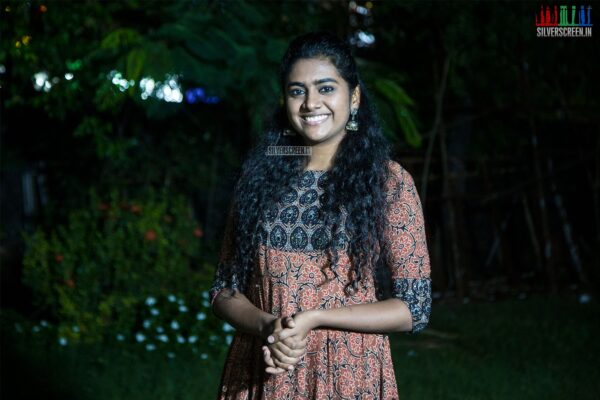
Although his own Malayalam debut has taken a backseat for the time being, Chaudhuri’s fondness for the industry has not diminished. He says he is particularly moved by the performances of actors like Fahadh Faasil, Prithviraj, and Nimisha Sajayan. He also reveals that Nimisha, who is renowned for starring in The Great Indian Kitchen, has expressed her interest in working with him.
Future plans and return to silent films
Chaudhuri’s upcoming projects include a couple more collaborations with Chopra. Other potential projects include a Hindi or an Indo-French film.
For his next project, Chaudhuri plans on returning to silent cinema. Both his movies prior to The Tale of a Santa and His Moth, namely White and Jharokh, were silent films. White is an anthology film that depicts the stories of three women who have been raped. It was presented at Cannes in 2018.
The filmmaker feels that words disrupt a movie. “Making a film is like making love to a person. Whenever there are words involved, the whole thing takes a pause,” he says.
Moreover, silent films give him the motivation to make movies that are more visually engaging, he explains.

In addition to this, Chaudhuri notes that he can reach a wider audience with silent films. “Anyone from any place will be able to understand the film without the bothersome need to read subtitles.”
Even in The Tale of a Santa and His Moth, the filmmaker says that he has used dialogues only when strictly necessary.
Chaudhuri says they will likely release the film in India in 2023, after its festival run. “But we have to first look at the feedback from the audience at the festivals and then take a call on whether or not to release it in theatres.”
Pa Ranjith to Helm Film and Series Titled ‘Vettuvam’; First Look to be Unveiled at Cannes Film Festival
Filmmaker Pa Ranjith, who last directed the period sports drama Sarpatta Parambarai (2021), is set to helm a linked film and web series project in Tamil titled Vettuvam, a source from the director’s team confirmed to Silverscreen India.
The first look of the project will be unveiled at the upcoming Cannes Film Festival 2022.
Vettuvam will be produced by Ranjith in association with Abhayanand Singh, Piiyush Singh, Saurabh Gupta, and Aditi Anand under the banner Neelam Studios and Golden Ratio Films. Ashwini Chaudhary and Parul Singh will serve as co-producers. Neelam Studios is a newly started venture, which will collaborate with Golden Ratio Films on this project.
Golden Ratio earlier collaborated with Ranjith’s Neelam Productions for Writer (2021) and the two studios are also backing the upcoming J Baby.
About the upcoming project, our source said, “Vettuvam means hunt in Tamil. With one title, there will be a film as well as a web series made. Ranjith will be writing and directing both. Vettuvam will be a new take on Robin Hood. It will primarily be a rural gangster film and will predominantly take place against the backdrop of a prison. There will be some cop-related elements to the story as well.”
The source further added that the team will announce the cast and crew members soon and that the film is expected to release in 2023. “After the first look is released at the festival, the shooting will commence sometime in the second half of this year. The film will be shot first, followed by the series.”
Meanwhile, Ranjith is currently working on his other directorial venture, Natchathiram Nagargirathu, featuring actors Kalidas Jayaram, Ashok Selvan, Dushara Vijayan, and Shabeer Kallarakkal. The filmmaker is also set to collaborate with Vikram on Chiyaan 61 under the Studio Green banner. His Hindi debut with the biopic on tribal leader Birsa Munda is also in the works.
Ranveer Singh’s ‘Jayeshbhai Jordaar’ Has a Dull Opening
Despite much anticipation, the Ranveer Singh-starrer Jayeshbhai Jordaar has failed to make much of an impact at the box office. The film, which released on Friday, had a dull opening day and managed to collect only around Rs 3 crore (nett).
According to Box Office India, the film was expected to do well in Gujarat, where the story is set, but it has performed poorly even there.
Written and directed by Divyang Thakkar, Jayeshbhai Jordaar stars Singh as the son of a traditional Gujarati sarpanch. The film deals with the issue of equal rights for women in society and conversations around the perceived necessity for a male child to carry on a family’s legacy. It also stars Shalini Pandey, Boman Irani, and Ratna Pathak Shah, and is produced by Aditya Chopra and Maneesh Sharma under the Yash Raj Films banner.
The film is expected to get more footfall over the weekend. Failing to do so could mean trouble for Jayeshbhai Jordaar. The film’s opening day performance is on the lines of other recently released movies like Jersey, Runway 34, and Attack: Part 1, all of which collected in the Rs 3 crore (nett) range on day one.
One reason for the film’s lacklustre earnings could be its failure to play at most single screens in the Central Province (CP). According to a report in Bollywood Hungama, single screen theatres in cities like Nagpur, and Raipur are not playing the film because YRF’s distributor in CP asked for a 60% revenue share from them. A source told the publication that the theatre owners had agreed to pay the normal 50-52.5% revenue but the distributor was keen on more. As a result, out of the 300 plus single screens in this region, only 30 of them are showing the film. The other theatres are instead playing the English film Doctor Strange: In The Multiverse Of Madness and the Marathi film Dharmaveer.
Meanwhile, Doctor Strange: In The Multiverse Of Madness did reasonably well on its second Friday in India, collecting Rs 3-3.25 crore (nett). The Marvel film headlined by actor Benedict Cumberbatch is a sequel to 2016’s Doctor Strange. According to BOI, the film is generally doing better than Jayeshbhai Jordaar aside from some Hindi pockets where the Singh-starrer has more shows.
Gulu Gulu: Santhanam-Starrer is a Black Comedy about a Travel Junkie, Says Director
Gulu Gulu, the upcoming Tamil film led by actor Santhanam, is a black comedy revolving around a travel junkie, says director Rathna Kumar.
“This is a socially-responsible film as well as a commercial entertainer. It falls under the black comedy genre, like Doctor and Kolamavu Kokila, and it also has elements of action and emotions,” he adds.
Speaking to Silverscreen India, Rathna Kumar, who has previously helmed Aadai and Meyaadha Maan and written the dialogues for Master and the upcoming film Vikram, says that Gulu Gulu features multiple characters, each of whom has a conflict and will also reach a solution for it through the course of the film. “The story follows how they get involved with Santhanam’s protagonist. The film revolves around this protagonist, who is a travel junkie and an innocent nomad. It follows his travels, the people he meets along the way and the changes he brings to their lives.”
“While I was working on Master and Vikram, I was also looking to start work on my own films. By a stroke of luck, I got to meet Santhanam sir in 2021 and pitched this storyline to him, and when he came on board, I wrote the script and we filmed it,” says the director.
Aside from Santhanam, Gulu Gulu also features Athulya Chandra, Namitha Krishnamurthy, Pradeep Rawa, Mariyam George, Sai Dheena, ‘Lollu Sabha’ Maaran, and ‘Lollu Sabha’ Seshu.
The first-look poster of the film was released recently by the makers. The film is produced by S Raj Narayanan and S Bharath.
Gulu Gulu is currently in the final stages of post-production. The film went on floors at the end of 2021 and was wrapped up this February. It was shot predominantly in Chennai by cinematographer Vijay Kartik Kannan.
While Philomin Raj has worked on the edit, Santhosh Narayanan has composed the music. “Music is another ‘hero’ of the film,” says Rathna Kumar. “As most of his (the composer’s) recent work was for films dealing with serious, political subjects, he had wanted to work on a more light, quirky genre. There are about five songs in the film,” he adds.
The director stresses that Gulu Gulu will be a “fun-filled adventure film, apt for all age groups.”
The team is planning for a theatrical release in June.
Meri Awas Suno Review: The Star Cast Does Not Make This Film on Speech and Silence Any Watchable
In director Prajesh Sen’s Meri Awas Suno, a radio jockey, a winner of many awards and hearts for his terrific voice and a talent for making heartwarming conversations with strangers on-air, loses his voice one day and subsequently, his will to live. Doctors warn his kin that he will not be able to stand loud noise and that he might not be able to speak again. In a film that revolves around sound and silence, however, the most prominent element is an overbearing background score which, like a nosy elder relative at a wedding party, dictates the narrative and turns it into a mess it wasn’t supposed to be.
Meri Awas Suno is an official remake of Konttho (2019), a Bengali drama directed by Nandita Roy. Konttho suffered from a similar tonal problem, but Jaya Ahsan’s central performance, as a buoyant speech therapist, kept the narrative afloat. In Prajesh Sen’s film, Manju Warrier plays the role. Warrier channels her famous off-screen charm into the character, but she turns the speech therapist into the unidimensional perky woman for whom mainstream cinema has always had a soft spot. When you first meet Rashmi Padath (Warrier), she is the chief guest at a women’s day event in a missionary-run college. Delivering a fiery speech about women’s liberation, she throws occasional smug glances at the nuns seated on the stage. The film puffs Rashmi up by contrasting her sense of freedom against the nun’s religiousness.
The flatness in Rashmi’s characterisation indicates the overall vapidity of the film. The film is verbose – every scene has pages of conversations, often expository, written without a flair, much like the daily spiel Jayasurya’s Shankar delivers on-air, in his popular FM programme, about staying optimistic in life. Sshivada plays his ever-supporting wife who balances a full-time job and overwhelmingly heavy domestic responsibilities with seeming ease. Her hair and face remain perfectly graceful throughout the film, unaffected by the tragedy that descended on the family. Their house, airy and luxurious, does not collect grime or chaos but stays as photogenic as it always used to.
The sole interesting segment in the film features Sshivada’s battered wife who wonders if her husband is turning into a stranger. She is a delight to watch on the screen, much more mellower an actor than her male co-star who uses every muscle and nerve to mark frustration and rage. The dinner table scene where she refuses to serve water to Shankar is the film’s highpoint, well-acted and surprisingly, decently staged, rife with tension.
The FM stations penetrated into the Malayali media sector at the beginning of the 2010s, quickly becoming widely popular. In Meri Awaas Suno, which happens in 2018, the FM stations continue to hold a great Lage Raho Munna Bhai-like power over the city’s people. In a sequence, in the beginning, Shankar rescues a lonely little girl from killing herself on her birthday. Everything about the sequence – from the building of tension to the sentimental background score drawing pity for the little girl – comes across as naive.
Prajesh Sen creates powerful moments for Jayasurya to sink his teeth into. He gets great close-ups and lengthy takes where he seamlessly goes from one emotion to another, flaunting his acting mettle. But the film suffers from utterly unimaginative writing and stilted staging of scenes. Consider the treatment sessions featuring Rashmi and Shankar. The duo roam typical spots of attraction – beaches, gardens and cafes – like a couple on a romantic date. While lauding this non-traditional therapy, the film looks down upon the more widely practised, affordable and professional system where the patients and doctors interact within a hospital environment without encroaching into each other’s personal spaces.
Meri Awaas Suno, in its writing and texture, resembles a Ranjith Sankar film, and this is, most definitely, not a compliment. It has colourful characters and a critical situation worth the viewer’s attention, but the narrative often tastes like a public awareness video that sells optimism. Shankar learns to speak and regains the will to live, but the film stays voiceless.
*****
This Meri Awas Suno review is a Silverscreen original article. It was not paid for or commissioned by anyone associated with the movie. Silverscreen.in and its writers do not have any commercial relationship with movies that are reviewed on the site.
Udal: Indrans-Starrer Explores the Evolution of Relationships across Generations
Udal, the upcoming Malayalam film led by veteran actor Indrans, is a family drama that explores the evolution of relationships across generations, says debutant Ratheesh Reghunandan.
Produced by Gokulam Gopalan under the banner of Sri Gokulam Movies, the film is set to release in theatres on May 20.
Speaking to Silverscreen India, Reghunandan, who has also written the story, screenplay and dialogues, says, “Udal explores the change in the dynamics of relationships across different generations. I believe that the depth of relationships changes over the generations. This is the core idea of the film. It’s mainly a family drama that also has some elements of a thriller. Indrans plays the lead character, named Kuttichayan.”
Reghunandan adds that Kuttichayan is a migrant farmer, who lives in a village near the hills. “Kuttichayan is a man who has dedicated his life to his family. I drew inspiration for his character from my native village. I am from a farming family in the hills in Kollam district. I developed Kuttichayan’s character, looks and personality based on the people I have come across in my own village. He also has poor vision. I added that element as it was needed to take the latter part of the story forward. ”
The film also features Dhyan Sreenivasan, Durga Krishna, and Jude Anthany Joseph. The filmmaker says that Jude Anthany plays Indrans’ son in Udal, while the bond between the characters played by Dhyan and Durga is complicated.
Talking about how the project took off, Reghunandan says that he had initially planned to make a big-budget biopic on late actor Sathyan, but it was temporarily halted due to the Covid-19 pandemic. “So, I was looking to do a comparatively smaller film that could possible be made under the Covid restrictions. That’s when I suddenly recalled an incident from my childhood. I was around 12 years old when I witnessed a scene in my neighbourhood, which stayed with me for many years. I used this as the base for Udal.”
After Reghunandan completed the story’s outline, he told his best friend Dhyan, who had encouraged him to work on it. The filmmaker then pitched the story to Indrans and Durga, and they immediately came on board.
“I finished writing the script in four days. The filming began ten days after the production house took up the project. We primarily shot at Thoduppuzha, with Manoj Pillai handling the camerawork. We began filming in September last year, when relaxations were announced after the second wave, and wrapped up in 20 days.”
Reghunandan adds that the background score plays a significant role in the film and they have been incorporated it in a way that helps to add depth to the scenes. Udal‘s music has been composed by William Francis.
The filmmaker also tells us that there are some raw action sequences in the second half that have been choreographed by Mafia Sasi.
Meanwhile, Indrans, who was last seen in Aarattu, has multiple projects lined up, including Shubhadinam, Kanakarajyam, and Bermuda.
Don Review: Sivakarthikeyan-starrer is all laughs, no threats
For more than three-quarters of debut director Cibi Chakaravarthi’s Sivakarthikeyan-starrer Don, which has a longish runtime of 160-odd minutes, you’re busy stifling laughter or seeing the previous laugh spill over to the next. And, quite a few of those gags are so rooted in Tamil cinema and its tropes, you recall them and laugh some more. You will never ever watch Baasha again the same way, trust me. And, for an added dose of nostalgia, Raghuvaran’s voice and Silk Smitha’s voice make an appearance too.
Director Cibi Chakaravarthi makes an assured debut with Don, which effectively uses a cloak of humour to cover an emotional core. The film stumbles in places when it transitions from fun and frolic to seriousness, but Sivakarthikeyan (playing Chakravarthy), Samuthirakani (playing the father) and a gloriously hammy SJ Suryah (discipline freak Boominathan) sell it to you well.
At its core, Don is about a happy-go-lucky boy Chakravarthy (Sivakarthikeyan, who is glowing in the film) who so wants to avoid joining engineering that he even jams his hand in the rice grinder before the board exams. His father is super strict, and some of his reactions border on abuse. The child grows up resentful of the father, and craving fatherly affection. He is in quest of something that will show him his dream career, so that he can get out of engineering college and its attendant discipline. Samuthirakani seems unfeeling, but then you see the depth of his love for his child, which he is unable to express in his actions — and his feet. The actor has been amid a purple patch for a while now — he just instinctively gets what the role demands.
In school, Chakravarthy crushes on Angayarkanni (an effective Priyanka Mohan), and his thought bubble immediately plays FLAMES, to see if the two will match. She has an understanding cop for a father and Don craves that presence in his life. But then his father happens to chance upon it and a tender love is seemingly crushed.
When Angayarkanni joins the same college as him, she begins with slapping someone for misbehaving with a girl and tells her that an immediate slap does wonders, but when she’s stuck in a similar situation, it takes the man to rush to her defence. Some better writing was needed here.
Director Cibi manages to keep the laughs coming every five minutes or so, and helping him is Sivakarthikeyan’s excellent comic timing and body language, and his sync with fellow actors Munishkanth, Kali Venkat, Bala Saravanan and Soori.
For those of us used to advertisements for realty being sold “Chennaikku miga arugil” (very near to Chennai), just about 60-70 km away, the reference to something similar in Coimbatore is a scream. That same distance in the Western Tamil Nadu district will see you cross the highway and hit the forest zone, or cross districts. That ties in neatly with scenes of wildlife and thick vegetation in the film. The director allows you to make the linkage.
At one stage, the college chairman (Radha Ravi), who loves the idea of new advertisements, shakes his head as Don gets him to agree to test the teachers. It might initially bring in the laughs, but at a deeper level, that scene also shows you exactly what is wrong with our education system. A system where learning stops at one level, and teaching just what one knows begins.
I quite liked some of the dialogues — they come from a place of understanding. Chakravarthy’s father and Boominathan change their minds after a longish period, but you don’t wonder why the sudden switch. As Samuthirakani’s character says, “we are also learning to be parents as you grow”. And, Boominathan says that teachers don’t always carry through with their threats to fail children in college.
The film, despite humour being its chosen vehicle, pauses to speak some bleak parenting truths, the sense of abuse children face, and the hidden sacrifice of parents who simply don’t know how to be expressive — the father never goes near the son, but always asks for a piece of liver when he brings home meat to celebrate the son coming home. But before he can eat it, there’s an argument and the son goes without eating. And it takes the mother (Aadhira Pandilakshmi gets the struggle of a woman torn between her son and husband just right) to speak some home truths to Chakravarthy.
Sivakartikeyan is on a roll after Doctor, choosing scripts that allow him to play to his strengths. Music by Anirudh is a tad disappointing (the songs don’t really lend much to the movie), with much of it sounding like something we’ve already heard (think Petta). Cinematography is by KM Bhaskaran, and he captures the vast landscape of the college well. Editing is by Nagooran, who manages to keep proceedings taut despite the runtime. He edited the superb Saani Kaayitham too (Amazon prime Video).
How should parents deal with children’s dreams is the question you’re left with after the movie. Is silent understanding and encouragement needed or should it be more obvious? And finally, when dream after dream is crushed in colleges where children are forcefully sent so that they can tick society’s bucket list, what about the kids who struggle to cope and seek a way out?
The only issue with Don is that these issues will hit you long after the movie is over. The humour, funny as it is, stops you from immediately grasping the depth of what director Cibi is trying to convey.
But, we all need these laughs, most of which are organic, in a post-pandemic world. The big screen is a good space for some escapist fare, and this ticks that box, while pushing the envelope and speaking about uncomfortable home truths too.
*****
This Don review is a Silverscreen original article. It was not paid for or commissioned by anyone associated with the movie. Silverscreen.in and its writers do not have any commercial relationship with movies that are reviewed on the site.
Jayeshbhai Jordaar Review: Simplistic At Times, but Always Earnest
The village Jayeshbhai Jordaar is set in treats women with the same care and thought kids extend to their toys. The scene where two infant girls are exchanged between two families in a mutual agreement of marriage, looks a lot like child’s play. “If your sister’s husband hits her, you should hit his sister, your wife.” Mutually-assured marital violence. Boman Irani plays a hardened patriarch in this village, located somewhere in Gujarat. Jayeshbhai (Ranveer Singh) is this man’s son and heir. He gets a look of approval and pride from his father only once in the film, and that is when he plans to shame his wife Mudhra (Shalini Pandey).
When a school-going girl comes to him, with her father, to complain about drunken men harassing her, his suggestion is to stop using fragrant soaps. Kushbu, he says, is the reason for lack of judgement, not their inebriated state. The girl listens to this and sits down in disbelief and helplessness. This scene and many scenes like this are played for laughs. The great thing about Divyang Thakkar’s Jayeshbhai Jordaar is that it mostly manages to keep the seriousness intact, while also finding humour in a bizarre situation. The dough-covered fingerprint of Mudhra, the Sarpanch, is also a nice touch.
The film has many such lovely touches. From the comment that equates the forefathers on the walls to CCTV cameras – watching everything and judging – to how Jayeshbhai’s sister reacts while slapping her husband, it all suggests a film that knows what it wants to say. It is also backed by great cinematography and editing. The screenplay interlaces the wedding album sequence with Mudhra’s child rolling down the windows and saying, “Hawaa aane de.” It is a great way to inject meaning and commentary without saying much.
However, the film is also simplistic. It insists that men aren’t at fault for their behaviour because they only learn what they see and are taught. But it never explains why Jayeshbhai is different. Where did he learn to be respectful and tender with the women in his life? Not from his mother who herself is a victim of internalised misogyny. Is it the wife then or the daughter? Possibly. Shalini Pandey has this innate ability to simultaneously seem meek and strong, an insinuation of strength and power just below the surface of cowardliness and fear. The child actor that plays their daughter is fantastic as well. Her worldliness would be annoying in any other film, but she is the Northstar here.
When looking for a place in India that is safest for women, Jayesh comes across Laadopur – a village in Haryana facing a scarcity of women because of the relentless female foeticide committed in the past. It is understandable for someone like Jayesh, with limited knowledge of gender politics, to consider this place a paradise for women. But for a film trying to discuss gender, it is myopic of the writer to think that a village filled with unmarried men, no matter how non-violent and docile, is the safest place for women. This short-sightedness becomes rather apparent when the film seems to propose that pappis can stop domestic violence. Suggesting that a woman should answer a slap with a kiss is not just disrespectful; it is plain stupid.
That said, there are two other scenes where the word pappi is mentioned, and both work wonderfully. “Saabash Mudhra,” says the doctor after Mudhra pushes her child out of her body, but the Saabash is two-fold. And the scene on the terrace where Jayeshbhai sits in front of a group of women and talks about how a pappi is an admission of love is sweet. It portrays how toxic masculinity affects men and stunts their emotional growth. This same scene also shows how this film isn’t your regular Akshay Kumar fare with a saviour complex. He isn’t there to soothe the women and tell them “Main Hoon Na.” It is about his emotional burden and the women coming to his rescue.
The main reason most of the film works emotionally is Ranveer Singh’s performance. Jayeshbhai is a good man, but he cannot prevent himself from being controlled by his father and the expectations. When his mother says, “You have to listen to society because you have to live with it,” he replies, ”I have to live with myself too.” He is constantly living with the realisation that he is bound to disappoint someone close to him, with every decision he makes. He smiles a lot, but he is rarely happy. A man in constant flux with his surroundings is marvellously characterised by Singh’s security and easy charm. Jayeshbhai looks at Mudhra like she is the most precious thing in the whole world, and that feeling propels the viewer to care about this journey.
Jayeshbhai Jordaar is a well-intentioned film that makes some missteps. Still, for the most part, it subverts the expectations one has from a movie about women centred around a man. While Singh holds the film together valiantly, Jayeshbhai falls apart frequently. Even if he gets a horse ride at the end, he is the macho hero trying to save a situation. He is just a father, who wants to be there for his wife in labour. “Prem se bolo,” roars a tired Ratna Patak Shah, Jayesh’s mother, at her husband. His vocabulary doesn’t have the word ‘please’. The film may be naive to think that a single instance of respect or love is all it takes to repair a fractured relationship, but you have to admire its earnestness.
*****
This Jayeshbhai Jordaar review is a Silverscreen original article. It was not paid for or commissioned by anyone associated with the movie. Silverscreen.in and its writers do not have any commercial relationship with movies that are reviewed on the site.
Mahesh Babu’s ‘Sarkaru Vaari Paata’ Collects Rs 50.10 Crore on Day 1
Sarkaru Vaari Paata, the Telugu film starring Mahesh Babu, which released in theatres on Thursday, has collected Rs 50.10 crore (gross) at the box office in Andhra Pradesh and Telangana on its opening day, says Anupam Reddy, Secretary of the Telangana State Film Chamber of Commerce.
The film, which opened to mixed responses, is directed by Parasuram Petla and set against the backdrop of the bank system. Sarkaru Vaari Paata is Mahesh Babu’s first release in two years. His last outing was Sarileru Neekevvaru in 2020.
Sarkaru Vaari Paata is jointly produced by Naveen Yerneni, Y Ravi Shankar, Ram Achanta, and Gopichand Achanta, under Mythri Movie Makers, GMB Entertainment, and 14 Reels Plus banners. Aside from Mahesh Babu, the film also stars Keerthy Suresh, Vennela Kishore and Subbaraju, among others.
Speaking to Silverscreen India, Reddy says, “The film’s first day collection was expected to be good since it is a star-studded release and has Mahesh Babu appearing on screen after two years. But, the film’s performance has been dropping since then. Theatre occupancy rate was at 80% on Thursday and will likely drop further from Friday.”
Balgovind Raj Tadla, Secretary of Greater Telangana Exhibitors Association and Partner at Sudharshan 35mm and Devi 70mm single-screen theatres in Hyderabad, says, “Due to the mixed reviews, and the fact that the film is releasing across a lot of screens, the reception is a little slow. With a series of big-budget films premiering one after the other, the expectations of the audience has become high. Unless a film delivers really good content, they don’t step out. Sarkaru Vaari Paata is good, but owing to the ongoing exams, the family audience has been absent, which also affects the performance.”
It is to be noted that theatre owners in Andhra Pradesh have been allowed to charge an additional Rs 45 per ticket for the first 10 days of Sarkaru Vaari Paata, after which ticket prices will revert to the regular rates. The film was also granted permission to run special shows in Telangana.
Puzhu Review: Mammootty Easily Shoulders a Middling Film on the Predator’s Paranoia
The State was a Hindu policeman in Manmohan Desai’s Amar Akbar Anthony (1977), one of modern India’s most popular films on religious harmony. The Christian and the Muslim characters, played by Amitabh Bachchan and Rishi Kapoor, respectively, were marked by their religious symbols, while the Hindu man, portrayed by Vinod Khanna, dressed in neutral clothes, possessed the reins to control the society – a pattern that aligned with Hindu majoritarianism.
In Puzhu, directed by debutante Ratheena PT and written by Harshad, the upper-caste Hindu is a policeman, an IPS officer, with the power to create or destroy lives and manufacture narratives that would eventually creep into history textbooks. But unlike Desai’s film, Puzhu is steeped in reality and a fine sense of justice. The film, which aspires to be a slow-burner, takes the viewer through the seemingly perfect life of the man, played majestically by Mammootty, and reveals its dark interiors. A widower, he keeps his son Kichu (Vasudev Marar), an early teenager, a prisoner at home, barring him from playing with his friends or mingling with people who aren’t his family members. Every evening, he makes him sit with him on their living room couch and watch an old home video featuring the late mother, to remind the child of what he lost. He threatens the child and emotionally manipulates him to keep him close as he fears he would lose Kichu to the outsiders, like how he had ‘lost’ his younger sister Bharathi (Parvathy TK) when she fell in love with a Dalit playwright-actor Kuttappan (Appunni Sasi).
For the most part, Puzhu invests itself in depicting the man’s paranoia. He does not trust the walls of his plush apartment guarded by a strong security system. He reaches for his pistol every time he senses danger – the sound of a door creaking or the sight of a fallen tree on the way home. Time and again, he barges into the shabby home of his former business rival (Kunchan), whom he had driven into deprivation, believing that he is still out there to harm him. Why does he, belonging as he does to the cream of Indian society, to the class that enjoys all the social powers and material wealth, believe that he is always under threat?
A straight line connects Puzhu to several celebrated superstar films in Malayalam, such as Ranjith Sankar’s Varsham (2014) in which Mammootty played a wealthy businessman grieving the death of his teenage son. In one of the most intense scenes in the film, his former domestic help, a Tamil man, meets him and weeps, only to be slapped across the face by the master. What is odd about the scene is not the act of violence by the wealthy man but the passivity of the film that coldly moves past the poor victim. In Puzhu, every slap is accounted for, dissected and studied.
Ratheena sets the frames in such a fashion that everything inside them makes one curious about the characters. The toys arranged next to Kichu’s bed, the colour of his pyjamas (Sameera Saneesh’s costume design is fantastic) or the living room furniture. The interior of Kichu’s apartment is modern and classy, but it exudes a strange sense of horror, a reflection of his father’s psyche. The greatest strength of Puzhu is not Mammootty but the atmosphere built by cinematographer Theni Easwar and musician Jakes Bejoy. Easwar’s moody lighting and the camera movements manifest the film’s tone. One might feel a chill down the spine when his camera, slowly, moves closer to the father and the son on the couch or when it observes the man being alone with his thoughts.
But this formal style could become meaningless in the absence of an equally sturdy screenplay. Instead of looking at the specifics of life, Harshad crams into the script several social issues – caste-based violence, toxic parenting, islamophobia and police violence – and turns the narrative into a cacophony of progressive political thoughts, muting the individual voices. Kuttappan, who possesses caste consciousness and courage, comes across only as a caricature, an embodiment of a social media page, devoid of human qualities like despair, fear or disgruntlement. In the latter half, the film throws away the opportunity to be a fascinating psychological drama on the paranoia of the powerful and becomes a summary of newspaper headlines.
In what must be its biggest misstep, Puzhu negates the cop’s paranoid schizophrenia, forcing the film to be a fable. At one point closer to the climactic end, he lashes out violently at Kichu, accusing him of partnering with his enemies. Now and then, he visits his bedridden, mute mother and like a little boy, unpacks his emotional baggage. Mammootty compensates for the natural limitations of his body using his brilliantly articulate voice and face. He brings to life the signs of the man’s mental aberrations and his intense hatred for what he regards as the ‘other’. The film’s utterly disappointing final sequence betrays this glorious performance. Ratheena and Harshad choose to make slogans out of broad strokes, abandoning the fascinating complexities of private life. Call it the curse of the woke era in Malayalam cinema.
*****
This Puzhu review is a Silverscreen original article. It was not paid for or commissioned by anyone associated with the movie. Silverscreen.in and its writers do not have any commercial relationship with movies that are reviewed on the site.
Udhayanidhi Stalin At The Nenjukku Needhi Press Meet
Vezham: Ashok Selvan-Starrer is a Romantic Thriller with a Psychological Lens, Says Director Sandeep
Vezham, the upcoming Tamil film led by Ashok Selvan, is a romantic thriller with a psychological lens, says debutant director Sandeep Shyam in conversation with Silverscreen India.
The first look poster of the film produced by Keseven was released via social media recently.
Speaking about his directorial debut, Sandeep, who has a background in advertising and short films, says, “Vezham is a romantic thriller at its core, but it also has a psychological perspective to it.”
Sandeep, who has also written the script, says he began working this story back in 2018. “I personally like thrillers, as they keep one engrossed wondering what is going to happen next. I’ve had an inclination towards the genre since childhood. I also like the romance genre, so I thought of combining both for my debut.”
“We used the title Vezham, which means ‘elephant’ in Tamil, because of the parallels between the protagonist’s character and the characteristics of an elephant, such as its memory power, its aggression, and the madness that causes the animal to go on a rampage. At the same time, an elephant is also a warm and affectionate animal. All other characters in the film will also be seen exhibiting different qualities of an elephant.”
The director says he approached Ashok Selvan to play the male lead because he felt that the actor tends to choose versatile scripts. Vezham also features actor Janani and it is her second collaboration with Ashok after Thegidi (2014). Actor Iswarya Menon plays another female lead.
“Ashok’s character is searching for something that lies in his memory. The characters of Janani and Iswarya will be instrumental in moving the plot. They are not used as mere eye-candy,” says Sandeep.
The director also reveals that Marathi actor Mohan Agashe is part of the cast alongside others like Kitty, producer PL Thenappan, and Sangili Murugan.
Vezham went on floors at the end of 2019 and was wrapped up in 2021. The film is set against the backdrop of Ooty and Coimbatore and has been predominantly shot in Ooty with a few portions filmed in Coimbatore as well. Cinematographer Shakthi Aravind has handled the camera work, while the editing is by AK Prasath. The music is composed by guitarist R Jhanu Chanthar, and Sandeep says two songs will be featured in the film.
The director notes that the team is planning for a theatrical release in June.
Ratheena Interview: Filmmaker on Making Her Debut with Mammootty-Starrer ‘Puzhu’
Puzhu, the upcoming Malayalam film starring Mammootty and Parvathy Thiruvothu, is all set to premiere on Sony Liv on Friday.
Directed by debutante Ratheena, the film is produced under the banner of CYN-CYL Celluloid by S George in association with Dulquer Salmaan’s Wayfarer Films. Renish Abdulkadher, Rajesh Krishna and Shyam Mohan serve as executive producers.
Ahead of the film’s release, Ratheena speaks to Silverscreen India about how the project took off, her working experience and more.
“Puzhu cannot be classified as a film belonging to one specific genre. It is a socially-relevant family drama with elements of a thriller,” says Ratheena.
The filmmaker reveals that she first pitched a different story to Mammootty and he, in turn, put her in touch with Unda’s writer Harshad, to write the screenplay. “We began working on that project, which was a large-scale film. Just then, the Covid-19 pandemic hit the country and we thought doing such a big project was not feasible. Meanwhile, Harshad ikka had already told Mammookka about another story. Since that was ready, Mammookka said that we could go ahead with it. That’s how Puzhu happened.”
Once the project was confirmed, two other writers Sharfu and Suhas came on board to pen the screenplay, alongside Harshad. Ratheena says they did not take a very long time to complete writing the script, as Harshad had already developed it in the form of a short story.
“The short story that Harshad ikka had written was well-structured. We began the initial production process with that. The trio stayed in Kozhikode to write the screenplay. I used to visit them to discuss developments,” she says, adding that Mammootty was also involved in the discussions at the scripting stage.
When asked about the one thing that made Mammootty say yes to the film, Ratheena says, “It boiled down to the content. He was very confident about this project. Even I felt that the story was touching and very impressive. This is a full-fledged Mammookka film, with him being present in most of the scenes.”
On working with a big star like him in her very first project, she says, “Mammooka has worked with a lot of first-time filmmakers and I am one of them. It is such a great thing for him to do.”
Ratheena mentions that she discussed casting with the writers’ team during scripting. “When we approached Parvathy, she listened to the story and immediately came on board. Mammooka plays the role of a father. Beyond this, I don’t wish to reveal too much about the film.”
Aside from Parvathy and Mammootty, Puzhu also features actors Nedumuni Venu, Malavika Menon, Swasika, Indrans, and Jaffar Idukki, among others.
Late actor Nedumudi Venu completed shooting his part for Puzhu just a few days before his demise. Ratheena says she considers herself fortunate to have directed such a legendary actor. “It was a memorable experience working with him. He told me that he was happy to hear a woman’s voice calling out ‘action’ and ‘cut’. He also said that many more women should come into this field, and predicted that in the coming years, the differentiation between ‘male filmmakers’ and ‘female filmmakers’ will fade away.”
She adds, “He was not keeping well at the time, but I was so amazed by his performance. We shot with sync sound and the way he remembered his lines and enacted scenes was flawless. He was such a great actor that when we set frames, he just knew how to move accordingly and use the right expressions.”
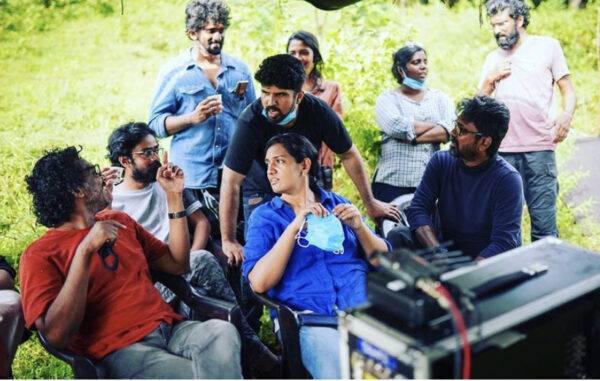
The film went on floors sometime in August last year, and was mostly shot at Ernakulam and Vagamon. The cinematography was handled by Theni Eshwar, who had previously worked with Mammootty on the 2018 Tamil film Peranbu.
Ratheena shares that it was Mammootty who suggested roping in Eshwar for Puzhu. “Mammookka set up a meeting with Eshwar. I had watched Peranbu earlier and had just seen his work in Karnan, which released around that time. I discussed Puzhu’s subject with him and he was very happy to work with us. There was a lot of space for healthy discussions and he was an asset for this film.”
Jakes Bejoy is the film’s composer, and Ratheena notes that music plays a significant role in Puzhu. She adds that the composer and her team did a lot of background research for the music and says she looks forward to the audience’s reaction to this aspect of the film.
Asked about the title, the filmmaker notes that there were a few suggestions for it, but she found Puzhu to be apt for the story. “When the audience watches Puzhu, they will understand why we picked this title and perhaps, they would have different perspectives on it.”
Talking about Puzhu’s release on an OTT platform, Ratheena says, “Initially, we did not have this in mind when we started working on this project. It was only after the shoot that producer George suggested a direct OTT premiere. I happily agreed as an OTT release will ensure a wider reach. Puzhu will be released in five languages – Malayalam, Tamil, Telugu, Kannada and Hindi. The film’s content is such that it is relatable and understandable to audiences beyond language and cultural barriers; it is not specific to any one place or time period.”
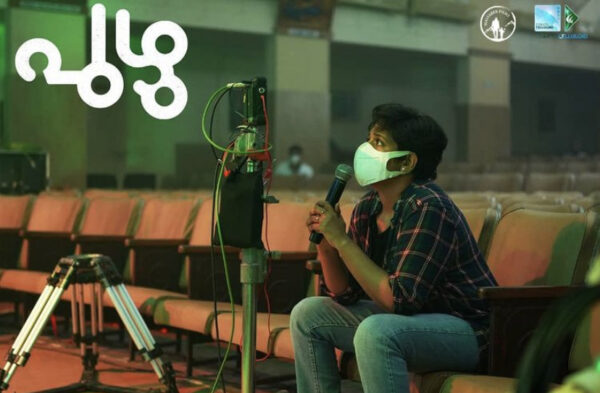
Ratheena previously served as an executive producer for the Parvathy-starrer Uyare. She has been in the film industry for more than a decade. She earlier lived in Chennai and worked on production and program coordination for television shows and ad films. Later, she went on to work as an assistant to actor-filmmaker Revathi. She then began focusing on the production side of things and Uyare was her first independent work. “Since I entered the industry after getting married and having children, I pursued short courses to spruce up my skills,” she says.
“Over the years, I realised my inclination for direction. While working on Uyare, I began writing the story that I had initially pitched to Mammooka,” she adds.
Ratheena says she is very happy to see more women entering the film industry as technicians. When she began her career, there were not many women working as technicians and even assistant directors were few. “Following the example of rising filmmakers like Anjali Menon, many more women are entering the industry. In Uyare, there were a lot of women working in the team and it was so good to see. Now, many girls are calling me, requesting to work as ADs. This is a big change and I’m so happy about it.”
Suriya Plays a Cameo in Kamal Haasan’s ‘Vikram’
Actor Suriya will be appearing in a cameo role in the upcoming Tamil film Vikram, starring Kamal Haasan, which already boasts of an ensemble featuring the likes of actors Vijay Sethupathi and Fahadh Faasil.
A source in the know confirmed to Silverscreen India, on condition of anonymity, that Suriya is part of the cast, which also includes Narain, Gayathrie, Kalidas Jayaram, Shivani Narayanan, and Arjun Das.
Vikram is scheduled to release in theatres on June 3. Written and directed by Lokesh Kanagaraj, the film is produced by Haasan’s home banner Raaj Kamal Films International in association with R Mahendran. Lokesh has also written the dialogues of the film in association with Rathna Kumar. Vijay Sethupathi essays the role of the primary antagonist.
Confirming that Suriya is part of the film, our source said, “He essays a cameo role in the film. He recently finished shooting his portions in Chennai.” This is Suriya’s first collaboration with director Lokesh.
While the actor’s role is being kept under wraps, speculations suggest that he will appear in the climax of Vikram. A video of Suriya hugging Haasan has also gone viral on social media.
It is to be noted that Suriya has earlier made a guest appearance in Manmadan Ambu (2010), starring Haasan. However, the duo did not have any combination scenes in the film.
On Wednesday, the makers of Vikram released the first single from the film, Pathala Pathala. The song is composed by the film’s music director Anirudh Ravichander with lyrics by Haasan, who has also sung it.
Vikram went into production in August 2021 and after 110 days of shoot, including some delays, it was finally wrapped up in early March. It has been shot by cinematographer Girish Gangadharan and edited by Philomin Raj.
This is Haasan’s 232nd film and it borrows its title from the actor’s own 1986 Tamil spy action movie that was directed by Rajashekar.
Vikram is set to also release in Malayalam, Kannada, Telugu, and Hindi, apart from Tamil. The streaming rights of the film have been bagged by Disney+ Hotstar. It will stream on that platform post its theatrical run.
Yamini Yagnamurthy Interview: Cinematographer of ‘Saani Kaayidham’ on the Film’s Distinctive Visuals, Aesthetics & More
While actors Keerthy Suresh and Selvaraghavan are being showered with praise for their performances in the recently-released Tamil film Saani Kaayidham, cinematographer Yamini Yagnamurthy’s work behind the camera has been widely appreciated as well.
Saani Kaayidham is the sophomore directorial of Arun Matheswaran and also the second instalment in his planned revenge trilogy. It was released on Amazon Prime Video on May 6 to positive reception, earning praise for its visual aesthetics and narrative. The film follows Ponni (Keerthy) and her half-brother Sangaiah (Selvaraghavan), who seek revenge after they become victims at the hands of a group of upper-caste men.
A few days after the film’s release, Yamini speaks with Silverscreen India about her work in Saani Kaayidham, her first full-length feature film, its visual narrative, and her experience while working on the project.
Handheld cinematography and visual aesthetics
Yamini used handheld cinematography for filming Saani Kaayidham. “The choice to go handheld was made by the director,” she says. “The input I got at the first meeting was that the visuals needed to be realistic, and show a sense of urgency and spontaneity. We have seen static action films but for this one, we aimed for authenticity with handheld cinematography. We felt it would add more character to the film.”
She explains, “When using a handheld camera, there will be a slight imperfection, as if the person is directly seeing what is happening. That will add more character to the scene and make it more realistic. The audience will consequently not get distracted and will remain more focused.”
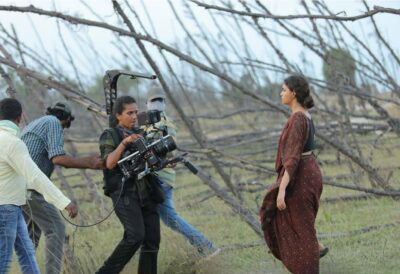
Yamini adds that this is also how she derives her best shots. “I like imperfections, personally. If something is out of focus, but the drama is intact and it works, I would call the take okay. But, of course, it is the director’s call. In this case, the director and I were in agreement.”
A noteworthy aspect about the film is its visual similarity with Arun’s previous film, Rocky. Both films feature monochrome shots, wide frames, and a minimalistic aesthetic. Yamini says she and the director both prefer minimalistic frames. But, she notes that there is a difference between Rocky and Saani Kaayidham in terms of the treatment, drama, lighting, and use of the handheld method.
Wide shots of the landscape appear in the flashback portions of Saani Kaayidham. Speaking about this, Yamini says, “The main, most important character of a film is the location. So, it is crucial to establish the characteristics of the landscape first. When you want to do that, you incorporate a wide shot. We used wide shots to capture places like Rameswaram and Dhanushkodi.”
Showing violence, colours, and lighting
Being a revenge drama, Saani Kaayidham employs violence as one of the elements of storytelling. However, the film has no gore or explicitly violent scenes. Instead, there are suggestions of sexual violence and scenes of blood bath.
Yamini says the credit for this treatment of violence entirely goes to Arun’s writing. “There is no physical contact portrayed, and in terms of framing, I preferred to have more faces to heighten the drama. This is more about what Ponni goes through. So, her face, how to frame it, the manner in which she emotes – capturing all of those elements, in the correct angle, was important.”
The film is divided into chapters. When asked how they maintained the overall aesthetics between the different segments, Yamini says this was done using a three-colour theory in the production design. “The shades and tints should not extend beyond three colours. When we keep the colours minimal, we direct the audience’s attention towards the subject. We used the same warm tones from head to toe. Luckily, we also found locations that were apt for filming with those tones. This is also why we used black and white. I am a huge fan of black and white photography. It makes the audience focus more on the subject and adds to the drama,” she explains.
As for the lighting, they again preferred to keep it very minimal. “I believe in the usage of single-source lighting, which is a recreation of sunlight or moonlight. The use of minimalistic lighting to define the edges of the subject will make each frame look like a painting. Also keeping the contrast ratio (shadows to highlights ratio) high brings forth a punchy image. The blacks will be deeper in the frame,” says Yamini.
Challenges and learnings
In one of the behind-the-scenes stills, Yamini is seen filming Keerthy inside the matador van, in what looks like a restricted space. Asked how she managed to work in that constrained space, the technician says it was required, especially for that part of the story. “Adaption is key,” she notes.

Another challenging sequence to film was one they shot at sea in Rameswaram. “In this film, whatever was written in the script was shot. But we did improvise a little, as per the demands of the location. One such sequence improvised on location was especially challenging. It’s the scene where Sangaiah goes on a boat and attacks a ship,” says Yamini. “We still used the handheld method, and did not have any special equipment. So, we had to place several stools for me to stand above the water level and shoot, while some crew members held on to the stools underwater. The tides at Rameswaram were also changing. That was quite challenging. We had to change the staging once we went there.” She adds that Ramu Thangaraj, the art director, had built the boat exclusively for the film.
Asked about any lessons she took away from the film, Yamini says that she learned how stunts were staged by watching the work of stunt coordinator Dhilip Subbarayan. “I learned a lot from him and he shared references from other films, as well. In terms of staging, I also learned plenty from Arun. From Dhilip master, I got a lot of clarity on stunts, and how a handheld camera can capture it.”
Yamini, who has a liking for action films like KGF, Kaithi, the 2014 American action film John Wick, and the 2003 Korean action thriller Oldboy, says she would like to work on more action films in the future.
Preferences vis-a-vis equipment and techniques
One piece of equipment that Yamini says always comes in handy for her is a camera vest from Sweden-based company Easy Rig. “I have been using Vario 5 Stabil G2, which can be suspended on the camera. It provides stabilised movement and it will take the counterweight. This equipment is very useful for handheld shooting. In India, when I was shooting, there was no vendor who could provide this. After purchasing it, I am currently an ambassador for Easy Rig in India,” she says.
However, Yamini says that the handheld method is not her go-to choice when filming. “Only when the film demands it will I use it. It is ultimately the director’s choice to go handheld. In Sillu Karupatti (a Tamil anthology, where she shot a segment), we used track and trolley, the traditional method.”

One of the rare female cinematographers working in Tamil cinema, Yamini feels there is no need to classify technicians on the basis of their gender. “I am a technician and my gender does not define my work. It is all about the work. Arun Matheswaran saw me only as a technician. It is only once we get past this question that we can attain gender equality. There are difficulties for all genders, and there are struggles for everyone.”
Yamini, who is currently shooting a Telugu project, says her primary focus is to be behind the camera. “I am drawn to lighting and how light falls on any subject. I want to explore that more. I was a food photographer and I wanted to explore lighting in a different direction, this propelled my transition to cinematography. I want to shoot faces. I really like the lighting in Nayakan (1987). I admire Santhosh Sivan sir’s framing, PC Sreeram sir’s work with high key lighting, and the staging of Ravi Varman sir.”
‘Rust’ Misfire: Producers Challenge New Mexico Safety Bureau’s Report
The producers of Rust have challenged the report of the New Mexico Environment Department’s Occupational Health and Safety Bureau (OHSB), which stated that the film’s crew “willfully violated” safety norms and regulations, leading to the death of cinematographer Halyna Hutchins.
Rust Movie Productions LLC noted, in an appeal filed on Tuesday, that the safety bureau mistook a device that was used to generate fake smoke for a fire extinguisher. “The attempt to extend the application of a fire extinguisher regulation to a special effects device shows their misunderstanding of the film industry,” read the notice.
Hutchins died on October 21, 2021 due to a prop gun misfire when actor Alec Baldwin was rehearsing with the firearm on the sets of the film, in New Mexico.
Since then, Baldwin, assistant director Dave Halls and armourer Hannah Gutierrez-Reed have been under investigation by the authorities. Multiple lawsuits have also been filed against Baldwin and the other producers for negligence and unlawful conduct.
In April, the OHSB published a report stating that the management team was aware that gun safety procedures were not being followed on the film’s sets, and had failed to rectify it. Thus, the production was fined nearly $137,000, the maximum amount allowed as per New Mexico laws.
In their recent filing appealing that report, the film’s producers have claimed that safety protocols were followed on set, including during the three alleged incidents of misfire. “The first was not a misfire at all and did not involve a firearm – it was a harmless noise from a special effects ‘popper.’ The other two involved discharges of blank rounds. Contrary to NMED’s statements, none of the ‘misfires’ violated firearm safety protocols on the set and appropriate corrective actions were taken, including safety briefings of cast and crew.”
They also stated that the cast and crew of the film received safety trainings, and claimed that one such meeting even took place on the day Hutchins was killed.
The producers further challenged the bureau’s report, which had noted that Gutierrez-Reed was tasked with other unrelated duties causing her to be distracted from her role as armourer and leading to the fatal shooting. They claimed that the 24-year-old had sufficient time on her hands to check the weapons, and was told that her duties as an armourer “always took precedence over any responsibilities related to props.”
It is to be noted that Gutierrez-Reed earlier told investigating officers that while she had cleaned the gun and was able to load it, she “didn’t really check it too much” before loading the final bullet because the gun had been locked up during lunch.
Rust Movie Productions also emphasised that the law permitted the producers to delegate “such critical functions as firearm safety to experts in that field and does not place such responsibility on producers, whose expertise laid in arranging finances and contracts for the logistics of filming.”
Cibi Chakaravarthi Interview: Director of ‘Don’ on Making His Debut with the Sivakarthikeyan-Starrer
Don, the upcoming Tamil film led by actor Sivakarthikeyan, marks the directorial debut of Cibi Chakaravarthi. Scheduled to release in theatres on Friday, Don is produced by Lyca Productions in association with Sivakarthikeyan Productions.
Cibi, who previously assisted filmmaker Atlee on Theri (2016) and Mersal (2017), says Don will be an “entertaining and emotional” coming-of-age drama. “Don follows the life journey of a person named Chakaravarthi (Sivakarthikeyan) from his youth up to his 30s. The film has many themes like adventure, love, friendship, teacher-student equations, and bonding with a father figure.”
Don’s antagonist will be the decisions that the lead character makes, according to the director.
“Although major portions of the film will be set against a college backdrop, it is not just a college drama but a coming-of-age story. The title Don derives from a nickname that is playfully attributed to someone who is mischievous and thrives on light-hearted practical jokes,” says Cibi.
The filmmaker, who has also penned the script, drew from his own background in engineering for the college portions of Don, using references from his own life and those of others around him.
Cibi says he wrote the lead role with Sivakarthikeyan in mind from the beginning as the actor’s real-life persona matches that of the character. “I had used the name Chakaravarthi for the male lead on one of the film’s early drafts and it stuck.”
“I had this story in mind for many years and I just wanted to make a heart-warming, feel-good movie on life,” says Cibi, who wrote the initial draft of Don in 2013 with the intention of making a feature film. But first, he helmed a pilot project named Bit, centred around a student-teacher bond taken from the story. Then, he went on to assist Atlee on Mersal. “I was determined to make my the debut with Don. I kept working on it as and when I got the time, and eventually, the film took off in 2021.”
From the pilot to the full-length feature, Cibi says he created over 20 versions of the script, experimenting with the screenplay, but keeping the core story intact.
Aside from Sivakarthikeyan, Don features several known faces like Priyanka Arul Mohan, SJ Suryah, Samuthirakani, Soori, Sivaangi, and Bala Saravanan. “As I was writing the different versions of the script, I could picturise the actors taking on these roles. Luckily, I managed to rope in the actors who were my first choices for each role,” says Cibi.
Don marks the second collaboration of Priyanka and Sivakarthikeyan, after the black comedy film Doctor (2021). However, she had signed Don before Doctor’s release. Speaking about her casting, the filmmaker says, “I saw a photo of Priyanka from Nani’s Gang Leader and then we initiated talks with her. At the time, I think Doctor’s shooting had not started yet and we only found out later that she had been cast in Doctor. Her character in this film is in contrast to what she did in Doctor, and hence, we chose to go ahead with her.”
On directing seasoned filmmakers like Samuthirakani, Suryah, and Gautham Menon (in a cameo) in Don, Cibi notes that they were all “completely actors” on the sets. “Samuthirakani sir is a method actor and he always stays in character while on set. SJ Suryah sir would always be ready to go for an additional take, if needed. All of them supported me as the director and delivered their performances efficiently.”
Cibi notes that his earlier experience assisting Atlee aided him immensely when it came to directing such a star-studded cast in his debut. Both Theri and Mersal starred actor Vijay, along with a host of well-known actors such as Samantha Ruth Prabhu, Amy Jackson, SJ Suryah, Vadivelu, Kajal Aggarwal and Sathyaraj. “They were both big-budget projects with popular stars and many junior artists. My experience of working on them, especially collaborating with such big stars closely, gave me a lot of confidence going into my own debut,” he says.
Don went on floors in February 2021, and was wrapped up in January 2022. It was shot across several locations, including Pollachi, Chennai, Coimbatore, and Kerala. “It was a challenge to shoot at live locations in the midst of the pandemic. Most of the crew are my friends. KM Bhaskaran (cinematographer) has produced some great visuals. Editor Nagooran has been an associate of mine for years; he earlier co-edited a short film of mine. Anu Parthasarathy, the costume designer, is one of the senior-most members of our team, in terms of experience, and I got a lot of great inputs from her,” says Cibi.
Referring to Anirudh Ravichander, who has composed the music, as the “pillar” of the film, Cibi says the songs and background score are some of the most significant elements of Don. The music director has composed five songs for the film.
Despite multiple delays, the team stayed firm on releasing the film in theatres, says Cibi. “It is my debut film and Don is meant to be watched in theatres. All of us were in strong agreement that the film had to be seen on the big screen.”
On what the future holds, the director says, “Working with such big names has given me the motivation and confidence to keep pursuing my dreams. This will serve as the base for all my future films. I am currently working on a few scripts, one of them is an action drama, which will be completely different from Don.”
Sivakarthikeyan, Priyanka Arul Mohan At The Don Press Meet
Petition Against ‘Jayeshbhai Jordaar’ Dismissed After Makers Agree to Add Disclaimer to Sex-Determination Scenes
A plea filed at the Delhi High Court against Ranveer Singh’s upcoming film Jayeshbhai Jordaar for showing sex-determination scenes has been dismissed after the makers agreed to add disclaimers to the scenes in question.
With the plea dismissed, the film is clear to release this Friday, as scheduled.
The plea was filed by an NGO named Youth Against Crime, which took issue with a prenatal sex-determination scene shown in the film’s trailer. It stated that although the film is based on the issue of female foeticide and promotes the ‘save the girl child’ cause, its trailer advertises the use of ultrasound technology for sex selection, which is restricted under the Pre-Conception and Pre-Natal Diagnostic Techniques (PCPNDT) Act, 1994. The act prohibits the use of prenatal diagnostic techniques for the purposes of sex determination.
Earlier, on Monday, a bench comprising of Acting Chief Justice Vipin Sanghi and Justice Navin Chawla observed that although the film intends to promote a good message, its trailer projects the notion that prenatal sex-determination techniques are freely available to the public. “There is nothing shown in the trailer indicating that the lady is taken to the doctor in a clandestine manner. On the contrary, what gets portrayed is that any pregnant woman can easily go to a centre with a sonography machine and that this can be done without any hindrances,” the court noted.
Following this, the makers agreed to add a disclaimer to all the scenes depicting sex-determination of a foetus. They also agreed to include similar disclaimers on all promotional posts and to the trailer that is already in circulation, within a week.
“Keeping in view that the film has already been certified and is scheduled to be released on May 13 and the disclaimer that has now been agreed to be shown during scenes in question, petitioner’s counsel fairly submits he does not press the petition further,” the court said on Tuesday, dismissing the plea.
Written and directed by Divyang Thakkar, Jayeshbhai Jordaar stars Singh as the son of a traditional Gujarati sarpanch. The film deals with the issue of equal rights for women in society, and conversations around the perceived necessity for a male child to carry on a family’s legacy. It also stars Shalini Pandey, while Boman Irani and Ratna Pathak Shah play supporting roles. The film is produced by Aditya Chopra and Maneesh Sharma under the Yash Raj Films banner.
